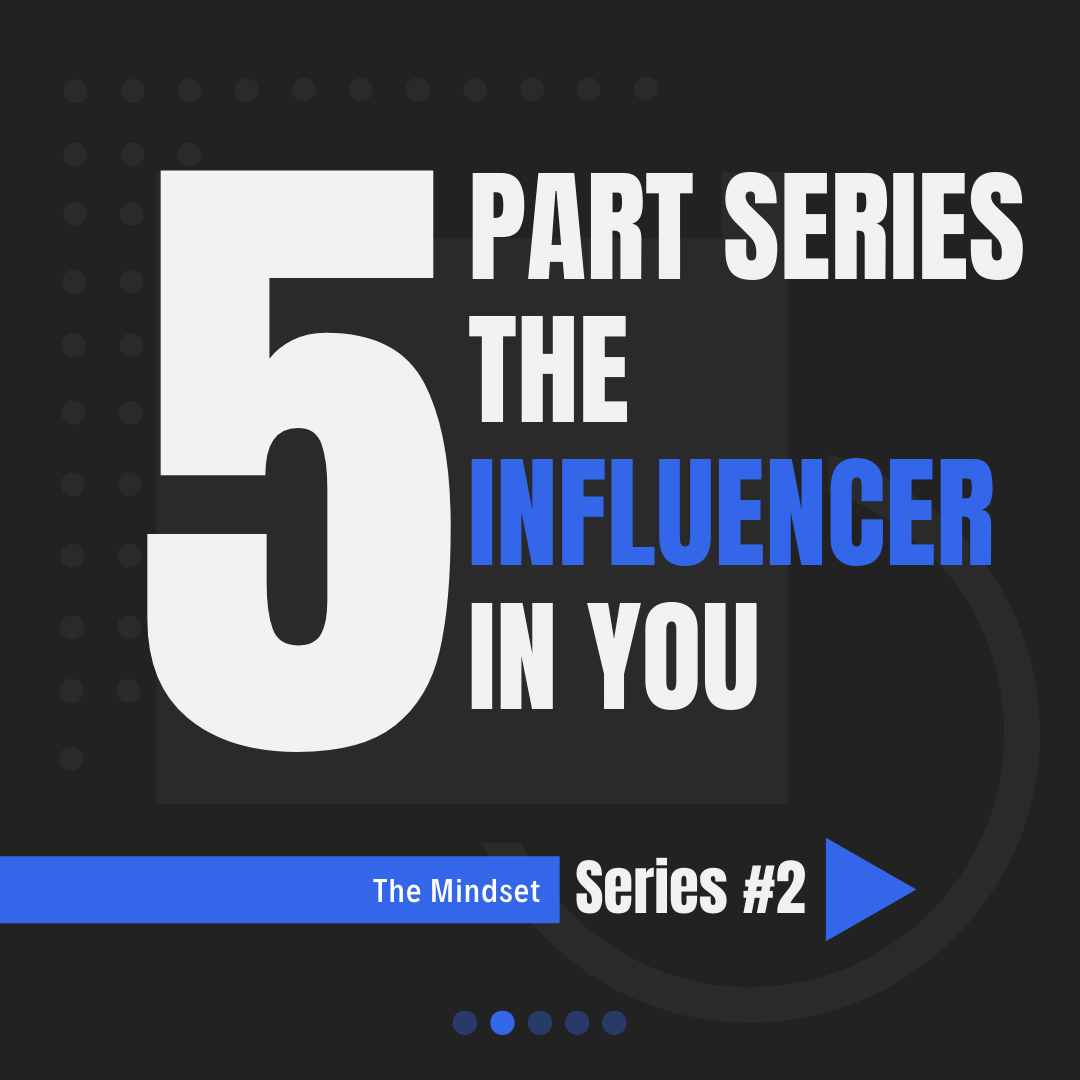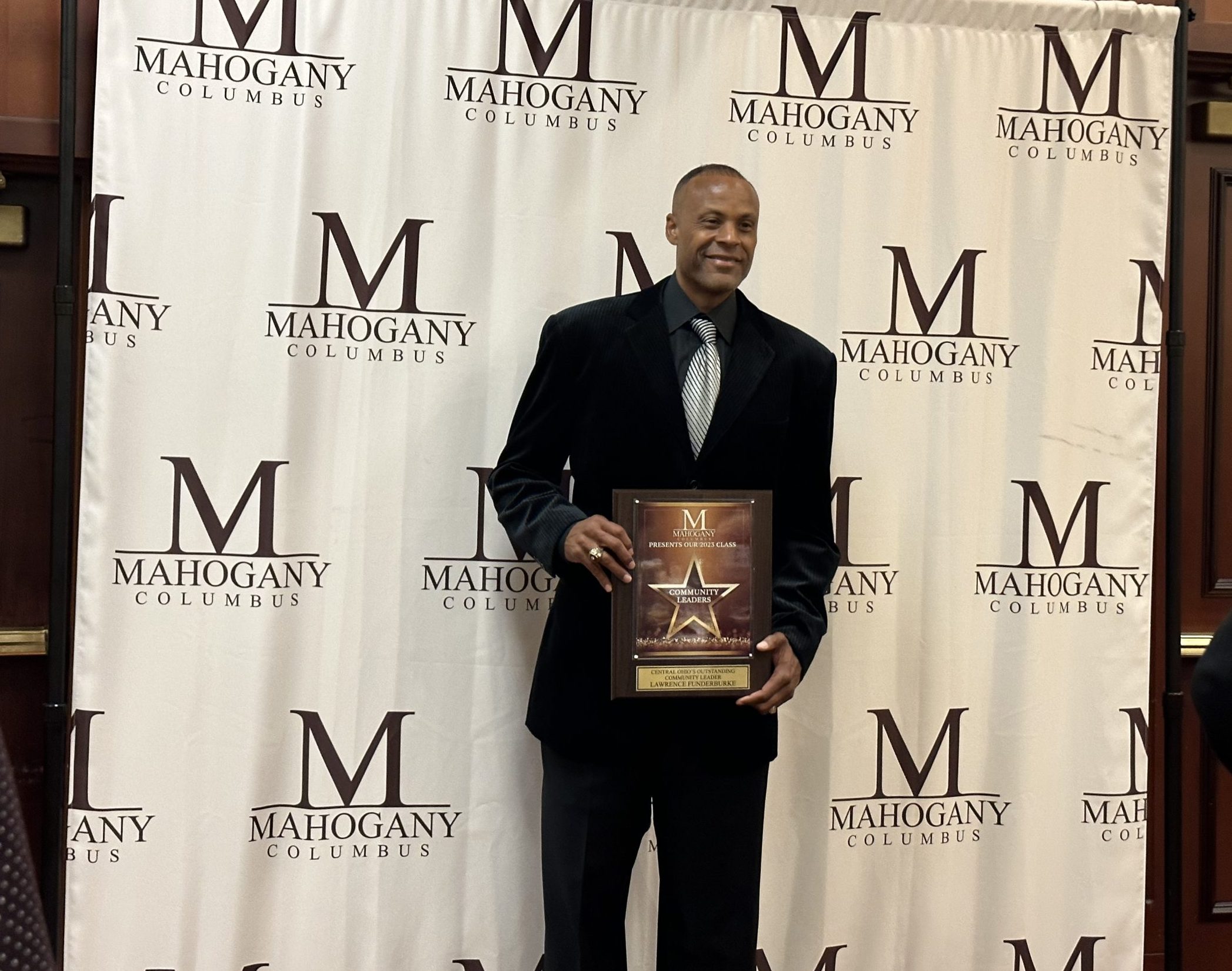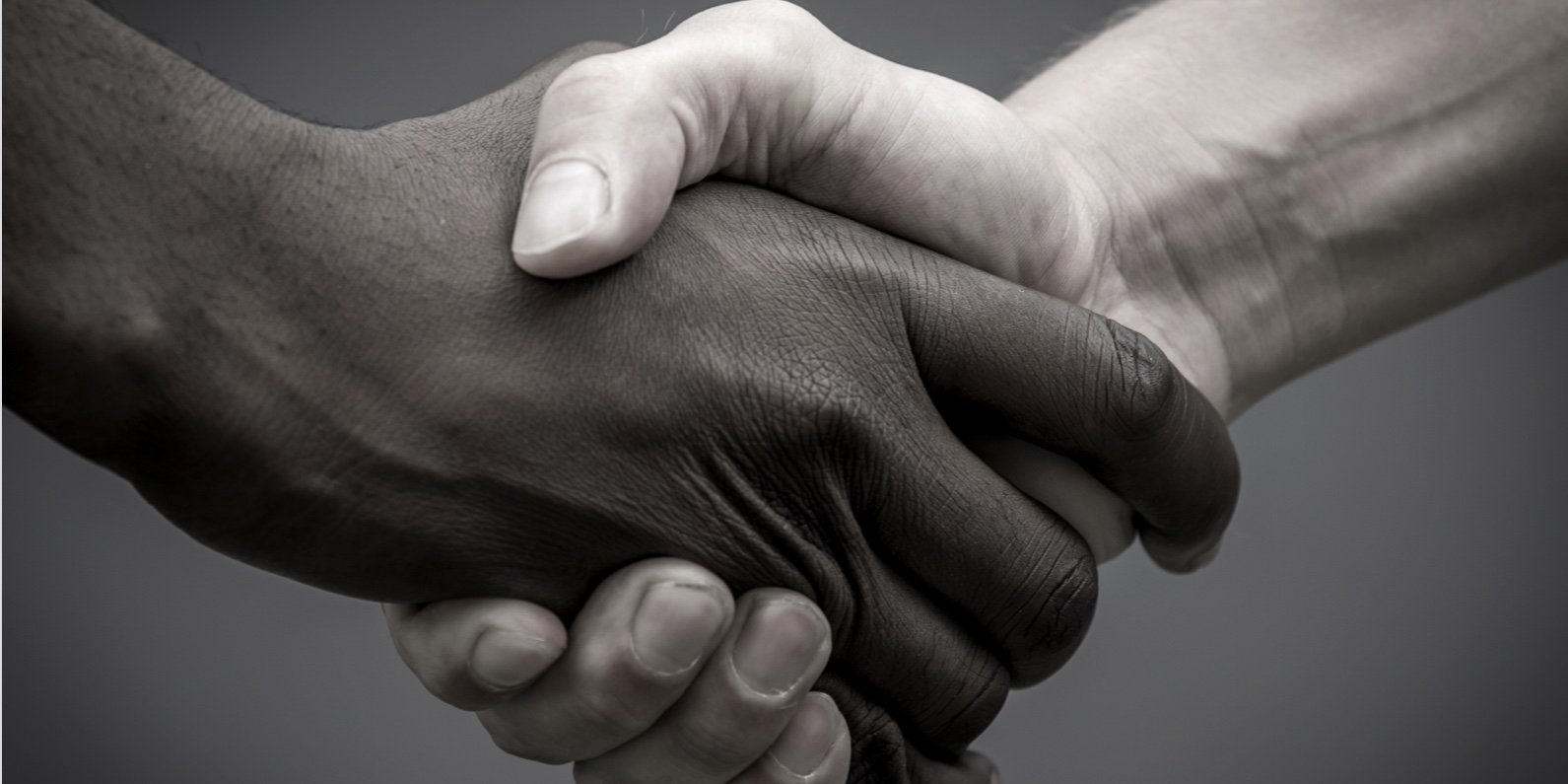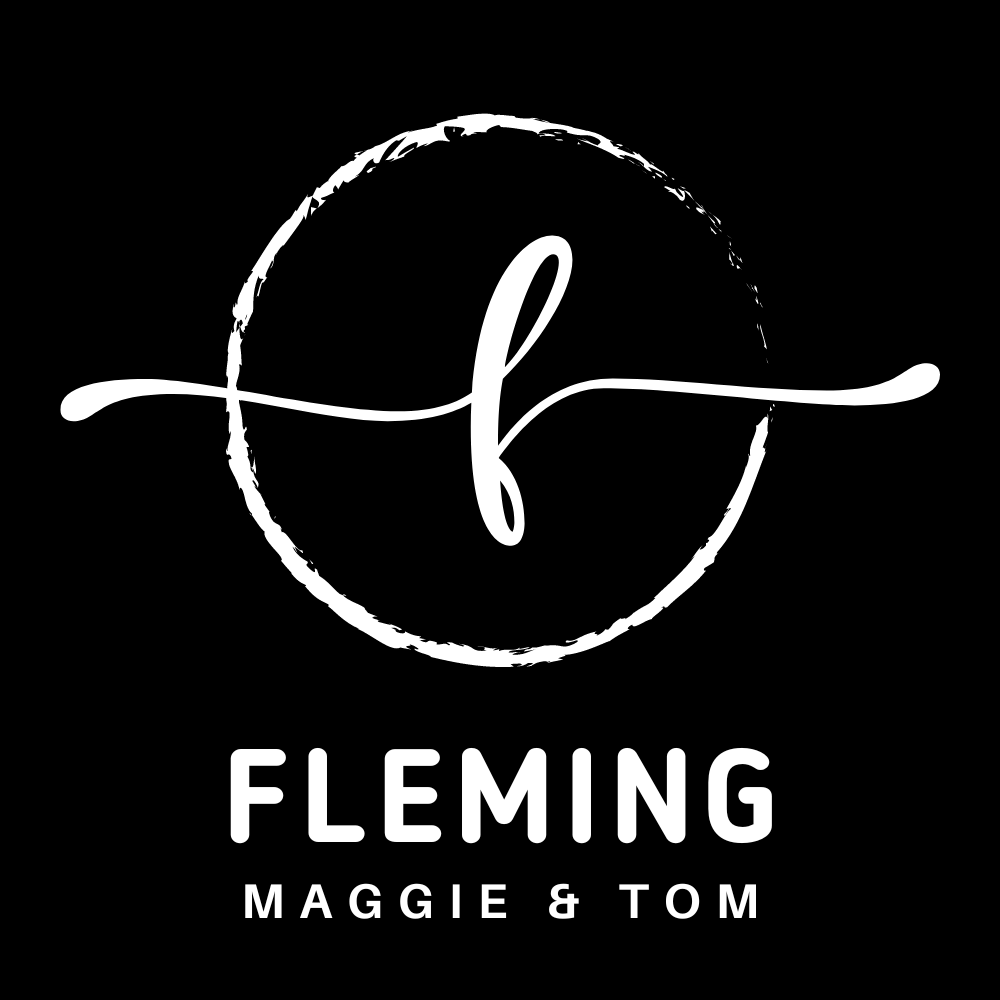The Influencer in You - 5 Part Series #3
The Influencer in You: Why Mentoring Works, How It Changes Lives, and Where It Transforms Legacies
Series #3: The Investment

Wait, Count the Costs Before You (or Your Organization) Embarks on a Mentorship Journey
Why do some mentoring initiatives fail? A multitude of reasons exist, but three underlying themes eventually come to the surface when a mentorship program misses the impact mark. First up, a lack of clearly defined expectations were likely assumed but not mutually or corporately agreed upon. This translates into porous boundaries, moving targets, and/or one-sided, hit-or-miss commitments. Mentoring engagements should be free-flowing, but guidelines and guardrails should serve as the turnoff spigot when a mentee (or even mentor) violates mentorship decorum. Here’s a true story to highlight a few etiquette breaches by a mentee who turned heartstrings into bankrolled dollars. An affluent woman, Irene, mentored a single-parent mother of seven. The single-parent mom, Sheila, has had a rough life. Drug addiction. Homelessness. Poverty. All at once. Several years ago, Irene volunteered at a nonprofit organization in a less desirable part of a big city. She was paired with Sheila, and the two bonded rather quickly. Irene provided her home number (a big no-no!) to Sheila. Well, Irene found herself taking calls from her mentee on the weekends and doling out lots of cash (really, cashiers checks) as the sob stories poured in. The violin music that struck a monetary chord? Bailing out Sheila’s boyfriend from jail. Paying three months of back rent to prevent an eviction. Buying groceries at the beginning of the month for Sheila’s children, days after her welfare check had been cashed. The mentoring engagement ended when Sheila unexpectedly showed up at Irene’s home in a prestigious neighborhood and stated, “I was in the area and thought I’d stop by to see you. Can I come in and check out your home?” Irene shared with me, “I was horrified, and I felt utterly violated.” She added, “The experience left such a bad taste in my mouth; I won’t ever do that again.” That is, sign up as a compassionate, in-person mentor for those on the fringes of society. Without being briefed on how to assist the poor, arm’s-length transactions, or writing big checks to various nonprofit organizations, is Irene’s preferred option moving forward. (I did present Irene with a copy of my book, Sociopsychonomics, to help her understand the mindset of the entrenched poor and social classes in general. Time will tell if she takes my suggestions to heart on how best to empower vulnerable populations through targeted, face-to-face interactions with clearly defined expectations, well-marked boundaries, and growth-oriented benchmarks.)
When so-called, challenging growth goals are nothing more than cleverly disguised activities, both the mentee and mentor are shortchanged.
Moving targets and hit-or-miss commitments can be viewed as separate but connected factors on why some mentoring engagements fall short. In professional and philanthropic mentoring circles, flexibility can start off as a good thing and quickly turn to a bad thing. Schedules inevitably change, but frequent rescheduling can cause either side to lose heart. Remember: For some mentees, their distrust meter will rise precipitously when a mentor postpones another meeting. The guilty mentor — whatever the reason — is in danger of being placed in the mentee’s dumpster of mistrust. Warranted or not, these mentees feel that their mentors did them dirty. Another person of trust has missed the mark. On the other hand, mentors will question mentees’ dedication when missed coaching sessions become commonplace. With this next point, beware of the tripwire effect of mentoring mediocrity. Average shouldn’t be an option for you, or any mentor for that matter. Good. Better. Best. Those are your three options. Now, good mentors can leverage their motivational proficiencies as change-agent specialists. They may motivate well but often fall short in their inspirational skillsets. Better mentors are prolific in how they inspire others. They may connect well but typically fall short in their transformational competencies. Very few mentors reach the rarified status of influence greatness. Why? The best mentors motivate and inspire their mentees through a life of purpose and legacy of goodwill. These influencers are masterful strategists in helping others connect the “why” dots of purposeful living with the “what” and “how” circles of leadership excellence and legacy continuity.
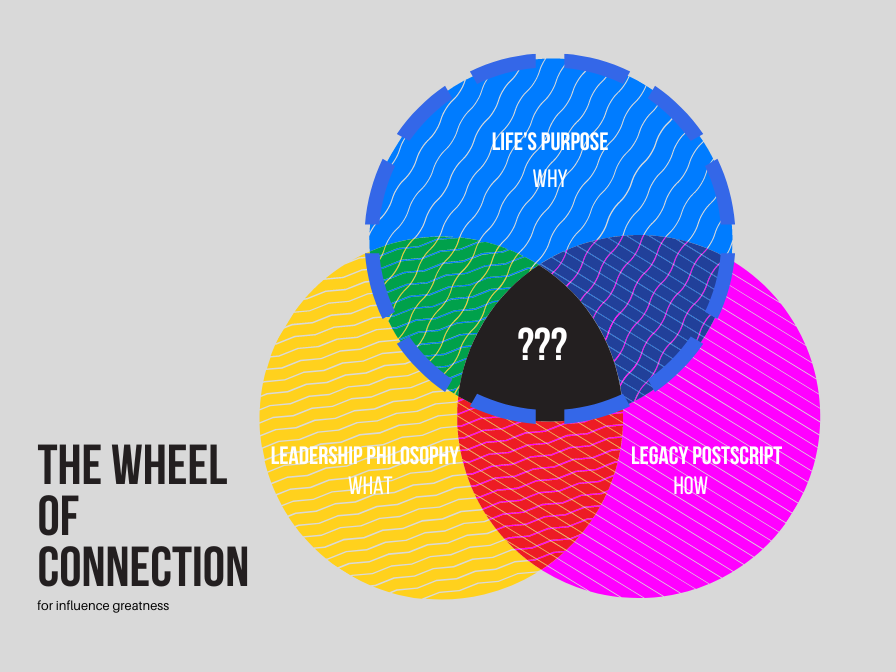
A mentor’s inability to merge sociology, psychology, and anthropology is another reason why mentoring initiatives flatline. You don’t have to be a tenured professor or doctoral candidate, but you do need to be a well-rounded student in these areas if mentoring effectiveness is your goal. Human beings are unique. However, they tend to act in predictable ways based on their social class mindsets, habits, and beliefs. How people think has a great deal to do with how their brain is wired. Some people are analytical or methodical in their formulation of information. Without an orderly process, things don’t make a lot of sense to this group. Others are moved by feelings, those sensations, pulsations, and vibrations that shape their mood and mode (or the speed in which they navigate life). Still others are harmony driven; they get along to go along rather than go along to get along. In fact, this brain type tends to relate well with every brain group through interpersonal dynamics. And finally, this last category of individuals will remember a face more easily than a name. They tend to have colorful personalities and visionary dispositions. With anthropology, this is perhaps the most controversial among the three “ology” factors. Of course, generalizations can lead to stereotypes when dissecting people groups and the way they’re likely to think, act, or behave. By embracing cultural differences — racial or otherwise — we’re able to refine, refocus, or reframe our diversity lens. Don’t run from controversy; utilize it for your mentoring benefit.
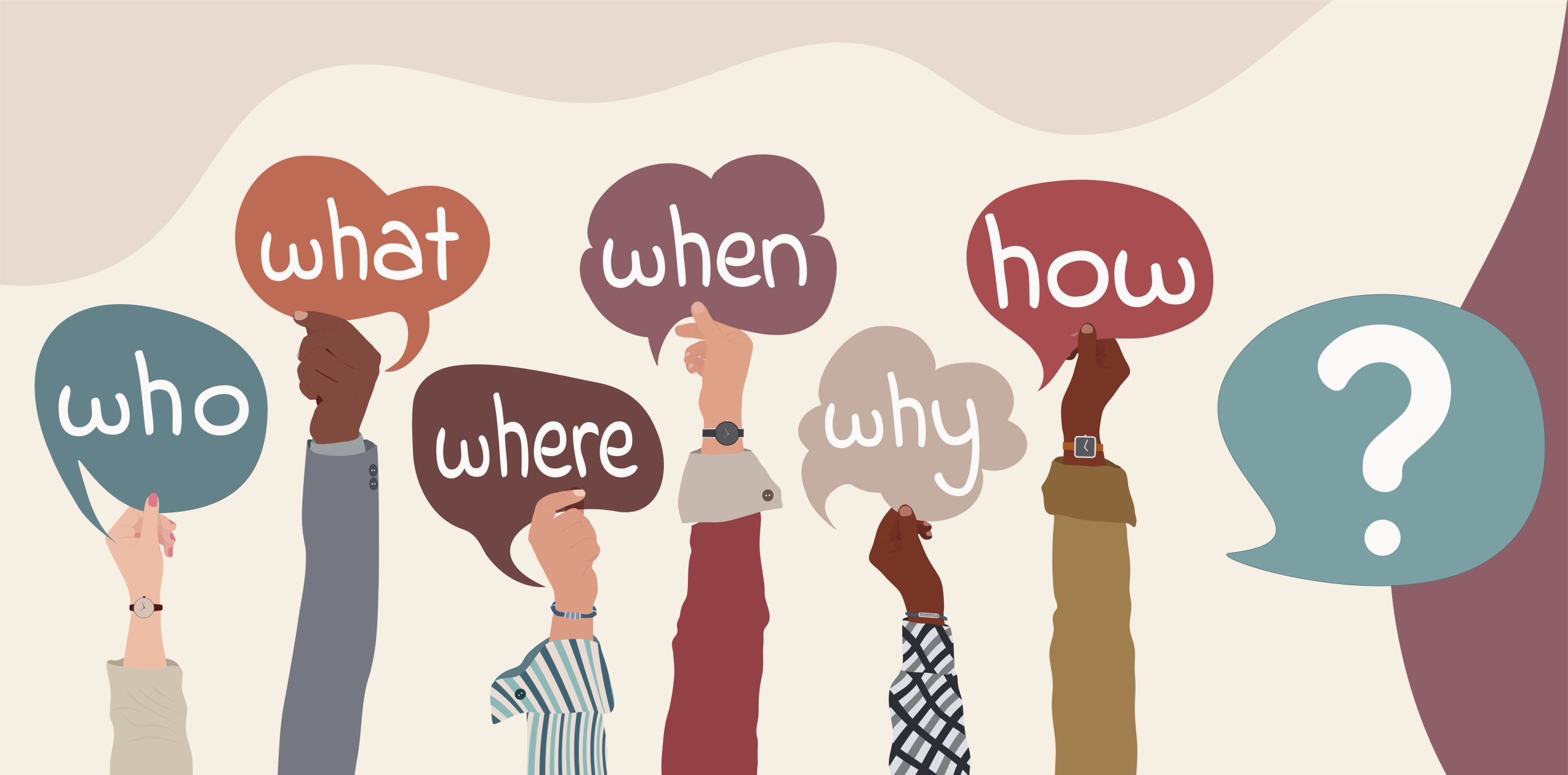
A third reason why mentoring initiatives come up short is rather obvious: most people are not well-versed in the art and science of inquisitiveness. The art part is how to phrase a question based on subtext, with the science part dealing with the syntax or structure of what to ask by context. I often say that the answer can be found in the questions you dare to ask. The best mentors tend to ask the most thorough and thought-provoking questions of their mentees. “What” questions are primarily concerned with information. Irene, the affluent woman mentioned earlier, should have asked Sheila, “What are you hoping to receive from our mentoring relationship?” An open-ended question that’s straight to the point. Sheila’s response would have likely provided Irene with a few clues about her previous mentee’s intentions and expectations, and more importantly, a framework by which boundaries could (and should) be established at the onset. “How” questions focus on process or strategy. A mentee may ask a mentor, “How were you able to overcome a difficult life event?” “Why” questions address intent, reason, or purpose, which can create incredible discomfort in the gut of the person being asked, especially if the subject matter is sensitive. For example, my kids have asked me through the years, “Daddy, why did your father abandon you as a child?” You probably can sense my pain in trying to formulate a response; I’m not sure that I’ve ever given them a satisfactory answer. I saw that mystery man three times in childhood — none after the age of nine. An alcoholic, he died at the age of 40; he drank at least one 40 ounce of malt liquor beer every single day. My father cared more about that bottle than the emotions bottled up inside of me. “Why” questions can be challenging for the sender and receiver, but they are absolutely necessary. For some mentees, they must go back there, to that haunting place, in order to get free here, a liberating space.
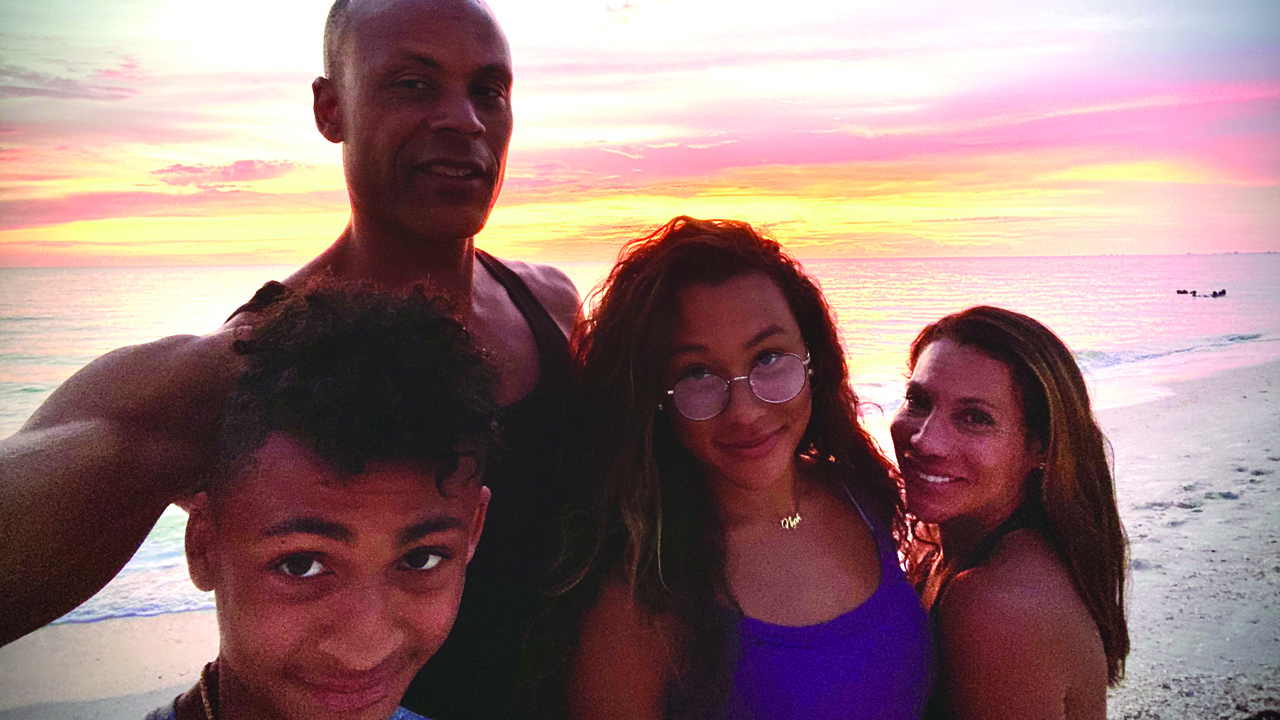
In summary, well-intentioned doesn’t equal well-executed. To quote Stuart Scott, the iconic ESPN in-studio host who passed away from cancer on January 4, 2015, “See, what, had happen, was”… an influence airball with so much on the line. As the lead, mentors should state and press their mentees on what the expectations are for the mentoring engagement. Included here are the deliverables, or who will do what (the baseline) and by when (the timeline). Be sure to highlight what the guidelines and guardrails entail. Among other factors, these consist of the preferred communication channel(s) for both mentor and mentee to interact, such as face-to-face meetings, online encounters, text messages, phone calls, or email exchanges. The do’s and don’ts of mentorship decorum fall under the etiquette basket or protocol category. Be honest. Be inquisitive (without prying). Be considerate. Don’t procrastinate. Don’t overstep. Don’t assume. Customize the do’s and don’ts that work for you and your mentee. Be flexible where necessary to get or keep the relationship on solid footing. Don’t be afraid — as a mentor or mentee — to hold the other person accountable. But make sure it’s with grace. Know thyself and take the time to get to know your protégé. Lastly, which type of mentor are you aiming for as it relates to the good, better, or best influence target?
Questions to Consider:

Which aspect(s) of Irene’s and Sheila’s mentoring engagement stood out to you? Why?
Where do you fall on the spectrum as a good, better, or best mentor? What metrics have you used to substantiate or validate your mentoring impact?
What lessons have you learned as a mentor or mentee in regard to why a mentorship engagement failed or succeeded?
Interested in Learning More?
Click the button below to learn more about my mentoring initiative and other empowerment offerings to assist you or your organization.
Related Articles
Nothing found.
The Influencer in You - 5 Part Series #2
The Influencer in You: Why Mentoring Works, How It Changes Lives, and Where It Transforms Legacies
Series #2: The Mindset

To Fix a Mentee or To Be Fixated With Mentoring: What’s the Difference?
In this second installment, it’s imperative to discuss the mindset or psychology behind (or in front of) effective mentoring before an individual can hit the mark personally, professionally, or philanthropically as an A-rated influencer. And far too many mentors and mentees rather fix (or be fixed) than become fixated. Remember my reference on continuous improvement in the first installment? Well, it comes down to three simple words: good. better, and best. The litmus test of influence is where you fall on the spectrum of mentoring effectiveness. Good mentors make a difference. They help mentees achieve success in a given area, bounce back from a setback, or sidestep a self-inflicted problem. However, they can be better, and what’s better needs to be the absolute best. Good mentors facilitate “win” only or solo results, where the mentee alone benefits. It’s often a one-way, transactional relationship. Simply put, good mentors invest their brand capital or sweat equity for mentee development purposes. Better mentors assist with “win-win” exchanges or two-way results, where the mentee and influencer both benefit transactionally and transitionally in terms of growth markers. Better attitudes. Better choices. Better outcomes. But the best mentors oversee “win-win-win” arrangements or trifecta results, where the mentor, mentee, and mentorship community benefit transactionally, transitionally, and transformationally. Here, mentors are replicated, mentees are dedicated, and the mentorship community is vindicated (because they see an influence need and fulfill it). Mentees eventually become mentors, and mentorship becomes an organizational investment or community initiative when mentoring needs are fulfilled by honor rather than duty.
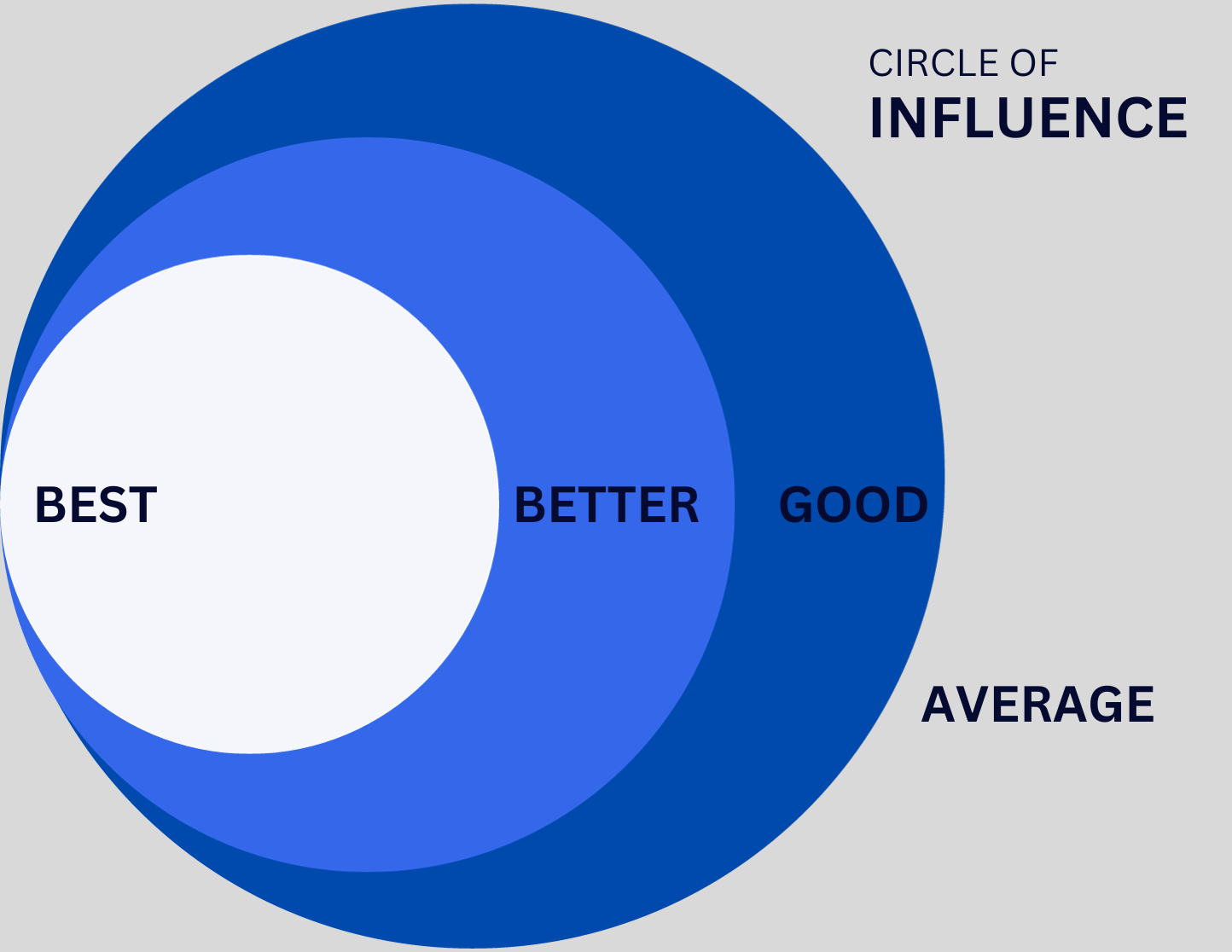
I don’t want to offend your intelligence (or anyone’s for that matter), but it’s important to define what a mentor, mentee, and mentoring relationship is in simple terms. As highlighted in my book, Momentum Power Play, mentors provide guidance and support (as do sponsors). However, they typically expect little in return from their protégés. They are usually drawn in to the engagement through an inspiration, information, or innovation connection. The mentee or mentor may be inspired by one another; admirable qualities — honesty, work ethic, humility, perseverance, and compassion for others, to name just a few — serve as touch points. Mentees often glean knowledgeable insights and advice from their mentors, with personal or professional development being a primary focus. Mentees often gain a much-needed boost to kick-start a goal or to stick with it to the very end. Motivation from afar or within arms reach is what mentors provide. (Sponsors, who do expect a return on their hands-on investment from their protégés, often have a strategic agenda with clearly defined expectations and boundaries.)
Keep in mind that a mentoring goal, objective, or task is the pursuit, not the attribute. It’s who you become along the way — during the mentoring relationship journey — that defines what you actually achieve as a mentor and how you’re likely to influence a mentee under your stewardship care (which can be mutually beneficial). Mentorship is the prize, self-mentoring the ultimate reward. Prizes are given, while rewards are earned. You’ll learn more about three of my prized mentors in upcoming articles, but here’s a quick overview of the impact Donna James, Clark Kellogg, and Steven Davis have had on my life. Donna James is an impressive individual, holding board positions with several Fortune 500, publicly traded companies. She’s humble, diplomatic, and incredibly bright; traits that I’ve been able to refine, from her shining example, in my own life. James is managing director of Lardon & Associates, LLC., a consulting firm. Clark Kellogg is best known for his basketball analyst work with CBS Sports. He is articulate, witty, and courageous (given the fact that he has to share studio time with Mr. Lightening Rod, Charles Barkley, during the NCAA tournament). A former Buckeye basketball great and ex-NBA star, Kellogg has served as an invaluable mentor to me on marriage, ministry, and meaning, as in life’s purpose. Steven Davis, former CEO of Bob Evans, passed last year. Words such as distinguished, polished, and accomplished come to mind first. I’m showing my ghetto fab ways, but I’d often stop by his home unannounced to watch this astute man in action — how he treated his wife, influenced his daughters, and kept his cool when I asked him difficult questions (for example, “How does a black man navigate white corporate America without being viewed as a charity case?”)
Mentoring success is a journey, not a resting place or comfort space.
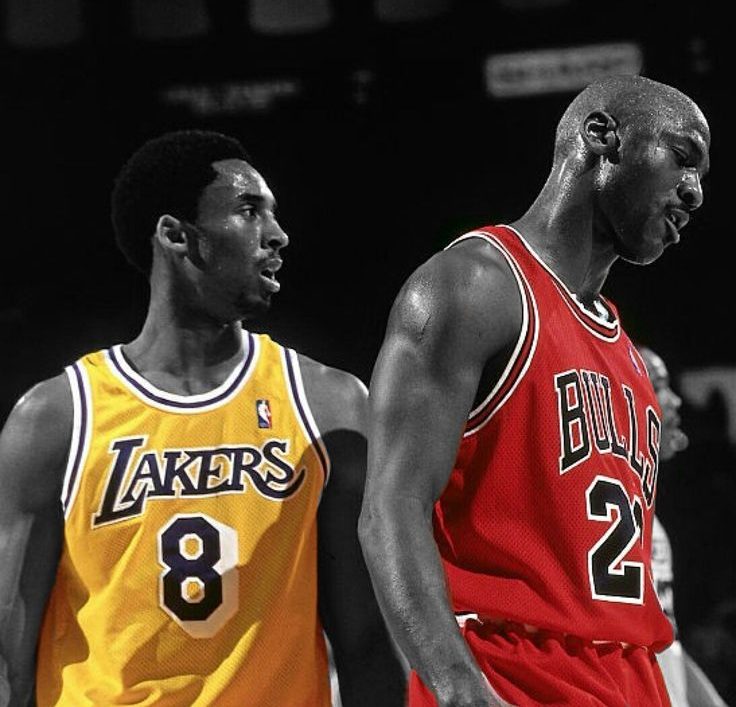
In closing, let’s end on a high note with a few pointers from two of the game’s greatest NBA players — Michael Jordan and Kobe Bryant. Now, their fixation on greatness rubbed so many people the wrong way. I witnessed it firsthand while playing for the Sacramento Kings in the 1990s and early 2000s. They irritated their teammates, aggravated sportswriters, and frustrated opposing fans, especially in hostile arenas on the road. These iconic figures were never satisfied with what they accomplished the previous season, past game, or last acrobatic shot. Why? Because comfort is the enemy of growth, especially when a self-mentoring investment or influence opportunity is on the line. And it has everything to do with excellence, not perfection. Jordan and Bryant displayed this every time they stepped on the court. Their secret, which can be yours, too? Greatness defined is process refined. Don’t settle for influence mediocrity. Aim for outlier status. Keep working on your internal and external improvement strategy, no matter the result. Be a growth-oriented difference-maker. Develop a mentoring mindset that won’t let you go through the motions. Ever. Mentorship is leadership, and please don’t forget this: You can’t take anyone further than where you currently stand. Doesn’t matter if it’s a mentee, sports team, or department.
Questions to Consider:

Which areas of your influence strategy do you need to refine as a mentor or sponsor? Be honest.
What are your most rewarding and challenging aspects of mentoring as a mentee, mentor, or mentorship organization? Why?
Who has had the biggest impact in your life, leadership, and legacy pursuits as a mentor from afar or within arms reach? Why?
Interested in Learning More?
Click the button below to learn more about my mentoring initiative and other empowerment offerings to assist your organization.
Related Articles
Nothing found.
The Influencer in You - 5 Part Series #1
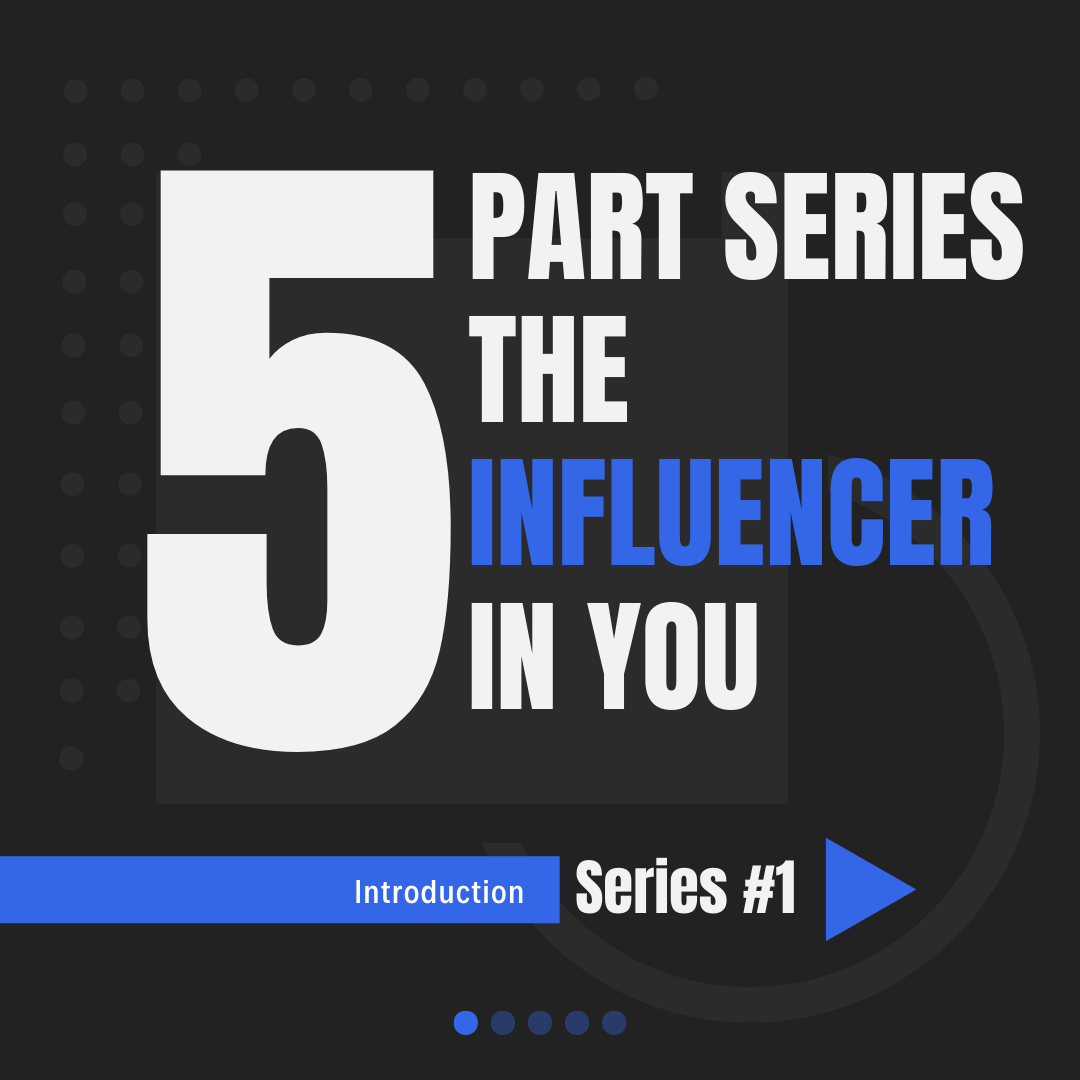
The Influencer in You: Why Mentoring Works, How It Changes Lives, and Where It Transforms Legacies

In celebration of National Mentoring Month, I am presenting a five-part series on why mentoring works, how it changes lives, and where it transforms legacies. Think about all of the mentors who’ve played an instrumental role in your life, leadership, and legacy pursuits. Have you thanked them lately? Caregivers, coaches, teachers, pastors, managers, social workers, and others have influenced us in profound ways. In turn, how do we “pay their investment forward” by making a mentoring difference inside and outside the workplace? Let’s set our game plan aside for a moment. Here’s what we do know. Mentors come in all shapes and sizes. Some are tall like me, while others are vertically challenged. They cover the racial spectrum; no ethnicity (or gender or social class) has a monopoly on who gets mentored. We’re all being influenced by someone or something, either positively or negatively. One thing is certain, however: seasoned mentors are bonafide tour guides. They transport their mentees to places and spaces by way of experience. The road frequently traveled is the path of familiarity. Of course, some newbie influencers, notably peer-to-peer mentors, won’t have an accurate lay of the land until they navigate it alongside their youthful counterparts. Yes, it’ll be fraught with pitfalls, roadblocks, and hazard signs. Please note: Growth can’t occur without some degree of topographical friction. Mentors must deal with their fair share of detours.
Without his fanfare, I’ve been called a softer version of David Goggins, a man with an impressive pedigree as a former navy seal and current world-class speaker. I’m quite familiar with who he is (because of the comparisons). But only recently — on January 3, 2024, while working out when I didn’t feel like it — did I become acquainted with his in-your-face style. Within minutes of the interview with Andrew Huberman on YouTube, Goggins discussed what makes him click, stick, and tick. He has little sympathy for others (his words, not mine!); I am quite empathetic. He admittedly has memory and recall struggles; learning comes quite naturally and easily to me. He grew up a chunky kid, weighing over 300 pounds in childhood; soaking wet, adding pounds to my 6’9” frame has always been incredibly difficult, even in adulthood. But the thing we do have in common is an insatiable appetite for self-mentoring. You see, most of us tend to wear the “self-motivated” label as a badge of honor. And there’s nothing wrong with this! But I prefer “self-mentored” since motivational cues can be fleeting when warm, fuzzy feelings stop flowing. Whether in a solo or crowded setting, self-mentoring proponents realize that their audience of one will always hold them accountable. As both a cheerleader and critic, the echo chamber of internal growth wouldn’t have it any other way.
The litmus test of effective mentoring is continuous improvement. I know, a trite saying that doesn’t carry as much weight as it once did (circa 1990s). Today, that expression is so passé. But change can’t take place on the outside unless transformation occurs on the inside. Never being content with the status quo is how anyone, and everyone, can become a top-notch mentor or change-agent specialist. No, you don’t have to reach a 10,000 hour milestone to obtain outlier status in the influence arena (as highlighted in Malcolm Gladwell’s bestselling book, Outliers). You can start right now — today. But most people talk themselves out of a mentoring commitment for several reasons:
- They are quick to point out, “I just don’t have the time.” Join the crowd; we’re all super busy. I realize my response sounds Gogginish 🙂
- An autopilot existence is perfectly fine for the vast majority of Americans. If no day is different than the next, then you, my friend, are tiptoeing the line of a mediocre life. Keep in mind that the currency of change requires an ongoing payment to sustain growth.
- A lot of mentoring fence-sitters don’t know where to start.
Well, look around. Our households, extended families, friendship circles, work places, and communities are screaming for mentors. Of the relatable, reliable, and reputable kind. Add reasonable to the mix, too. In this series, I’ll challenge you (just like David Goggins) to hit the influence mark personally, professionally, and philanthropically. Why? Because when you see a mentoring need and don’t fulfill it, a lot of innocent people get left behind due to your awareness breach — many of them permanently.
Questions to Consider:

Who has had the biggest mentoring influence on your life personally, professionally, and philanthropically? Why?
What hangups, holdups, and hiccups do you have with mentorship or sponsorship in an organizational setting? Be honest. (The difference between mentors and sponsors? Mentors make an investment, while sponsors expect a return on their investment. Their ROI is often based on a quid pro quo arrangement with protégés.)
How likely or unlikely are you to enter a mentoring engagement with someone who doesn’t look, think, or act like you (or your comfort zone clique)? Why?
Interested in Learning More?
Click the button below to learn more about my mentoring initiative and other empowerment offerings to assist your organization.
Related Articles
Nothing found.
Giving Back So Others Can Start Moving Forward
Year In Review –– 2023
Giving Back So Others Can Start Moving Forward
Monya and I want to thank LFYO supporters, partners, and board members who made 2023 a year to remember. More than 750 at-risk individuals were impacted by our programs, workshops, and camps. From personal branding to job skills readiness to financial fitness, participants were given the game plan to achieve better life prospects and legacy pathways through cutting-edge offerings. Every innovative app and sensory-based tool is created in-house to make learning an inviting and empowering experience. For our efforts, LFYO was the recipient of Mahogany Columbus’ Central Ohio’s Outstanding Community Leader Award.

The Columbus Foundation
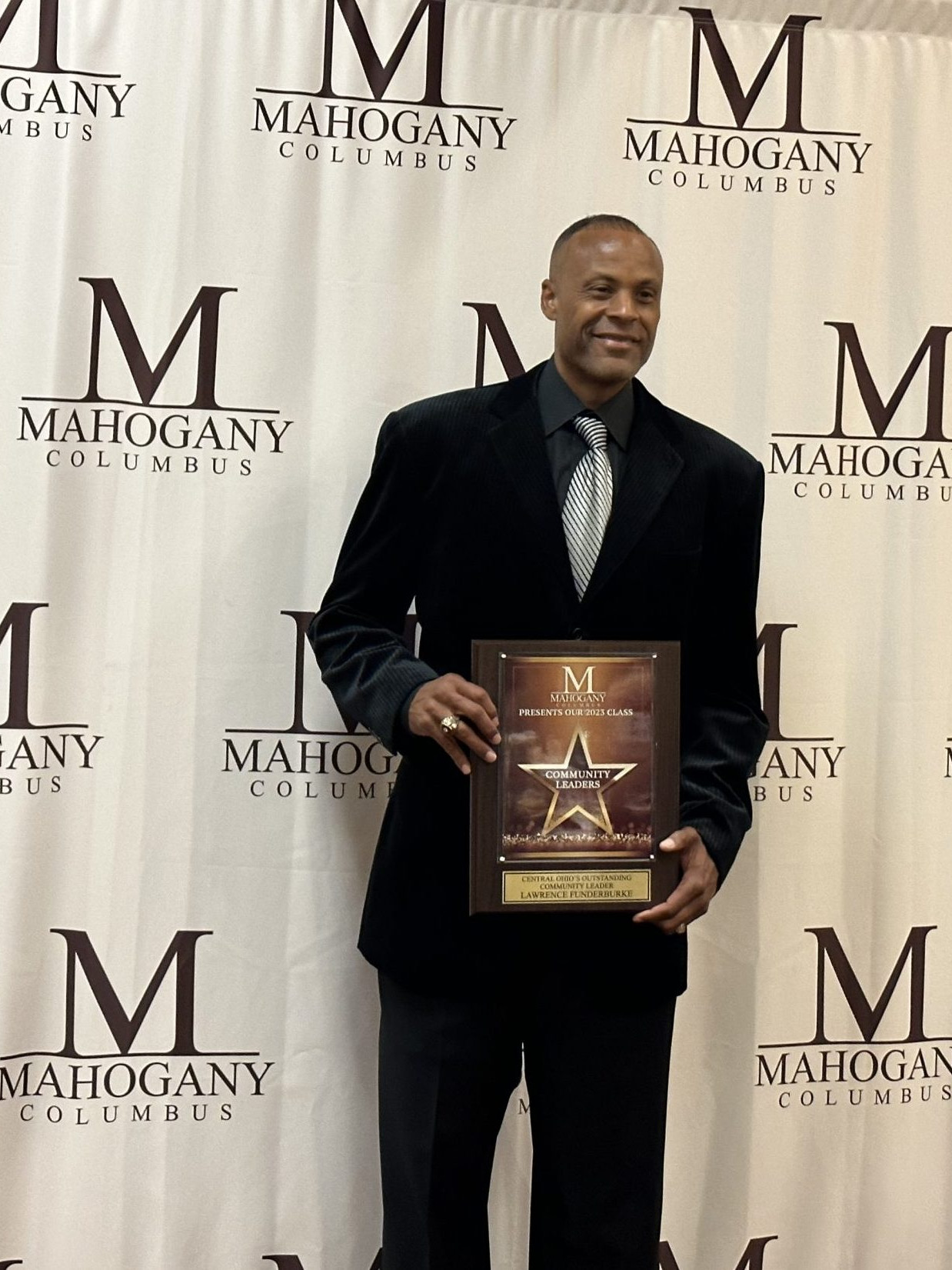
Central Ohio’s Outstanding Community Leader Award

Crimson Cup Coffee Headquarters
2023 LFYO Fundraising Luncheon
The 2023 LFYO Fundraising Luncheon on September 15th at Hyde Park Prime Steakhouse was spectacular. The beautiful weather. The first-class service. The heartwarming atmosphere. Attendees were treated to scrumptious appetizers, a steak-chicken-and-salmon trio, and a delectable dessert combo. Speakers shared insights that resonated on a number of fronts, most notably how to make a lasting difference in helping vulnerable males reach outlier status as statistical anomalies. As Clark Kellogg and Gene Smith highlighted in their riveting speeches, Buckeye Nation is a family of caring souls and equally generous hearts.
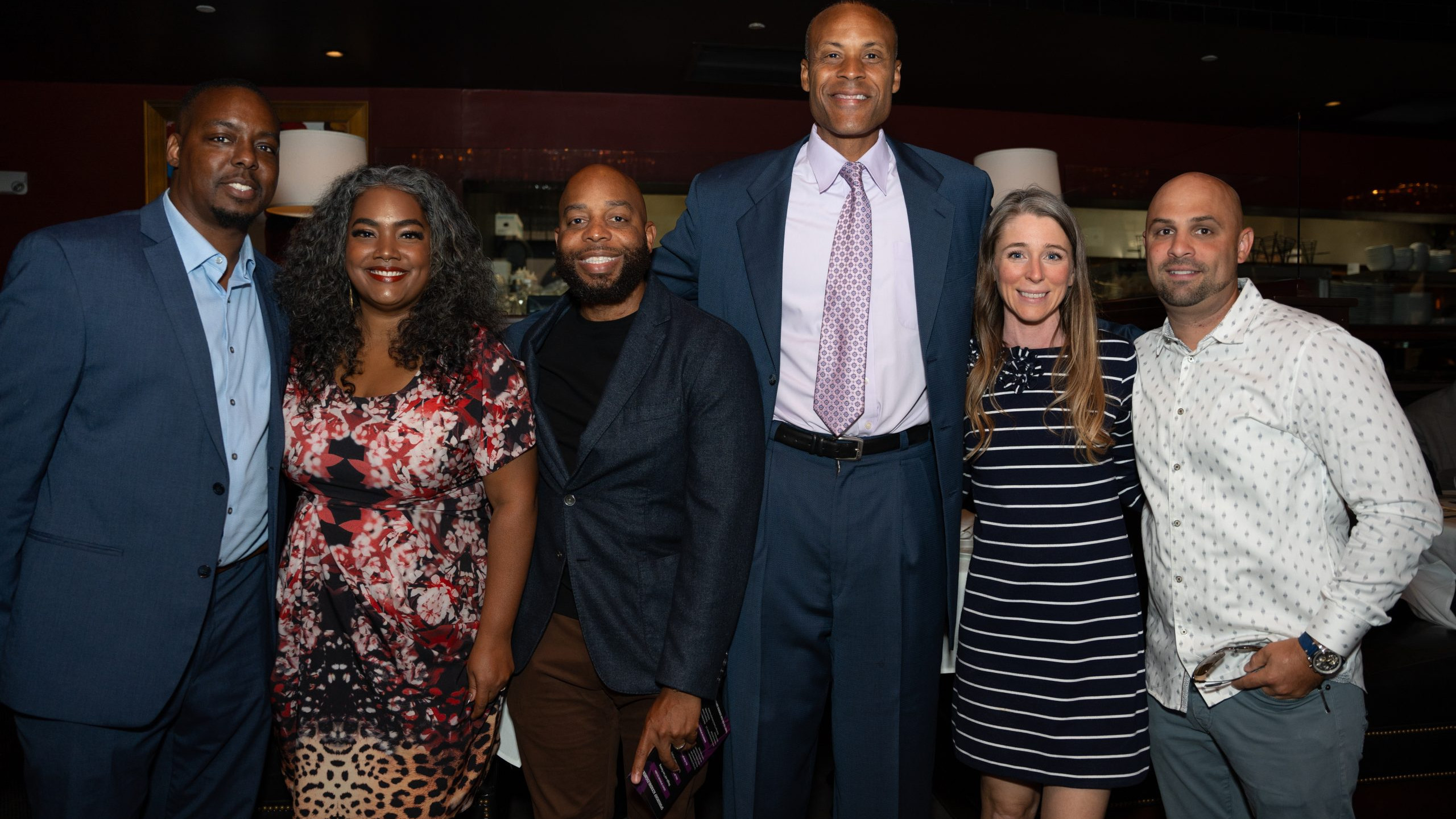
All-Star Sponsor Lindsey and Jacob Osborn (far right)
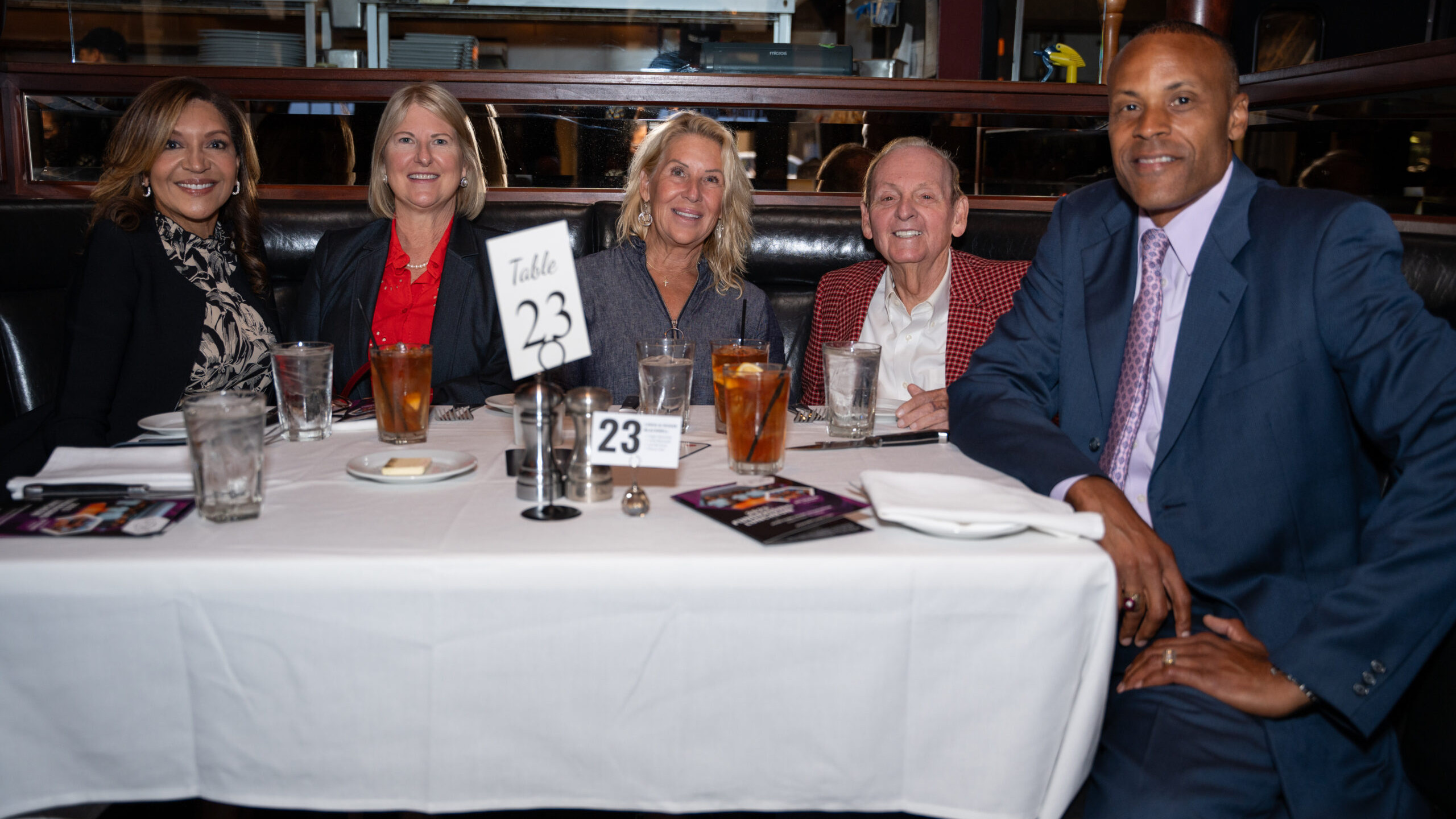
All-Star Sponsor Linda and Roger Blackwell (center right)
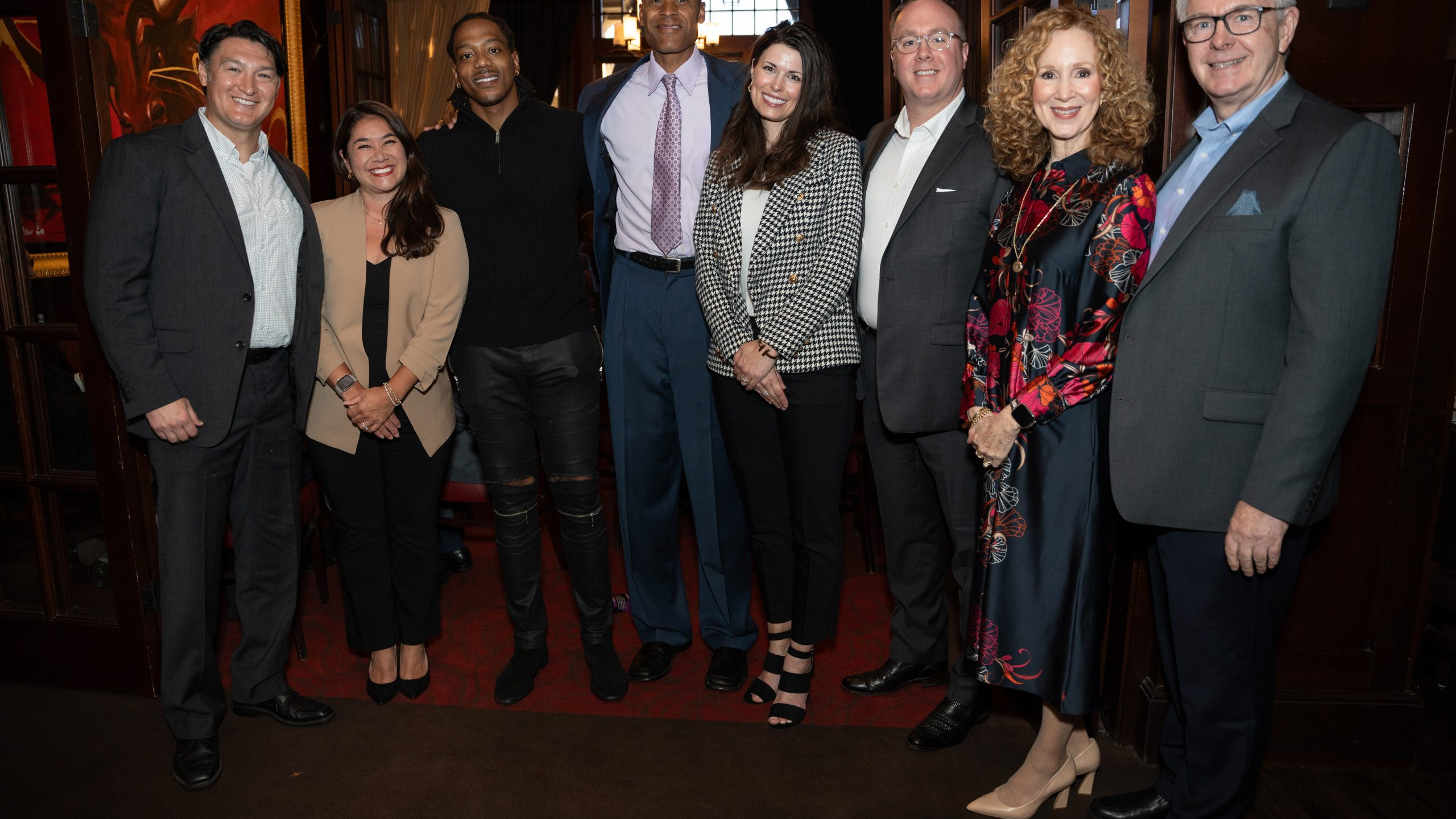
All-Star Sponsor Rebecca and Brandon McAllister (center right)
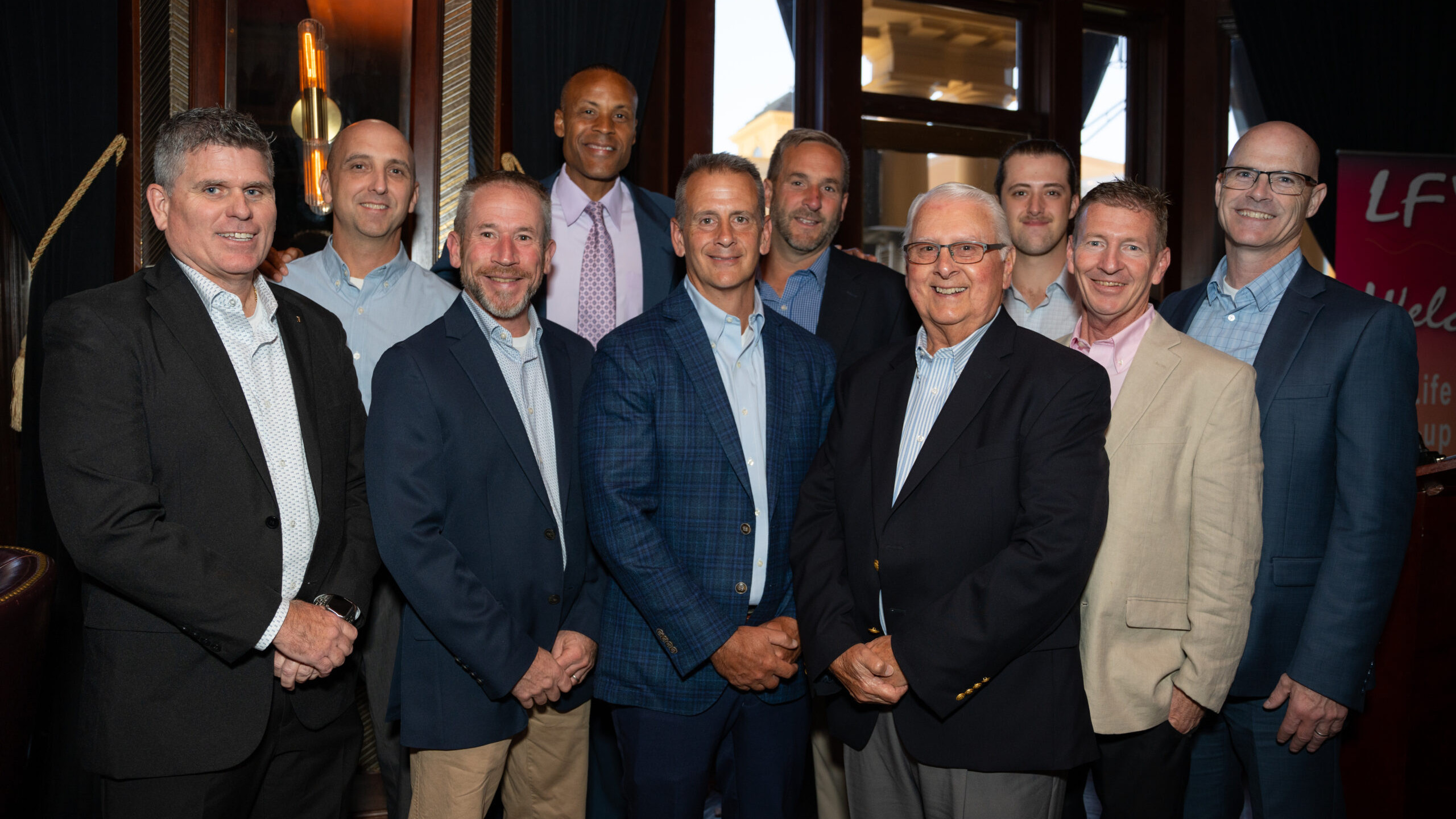
Legacy Sponsor Tom Fleming with Guests (front row center)
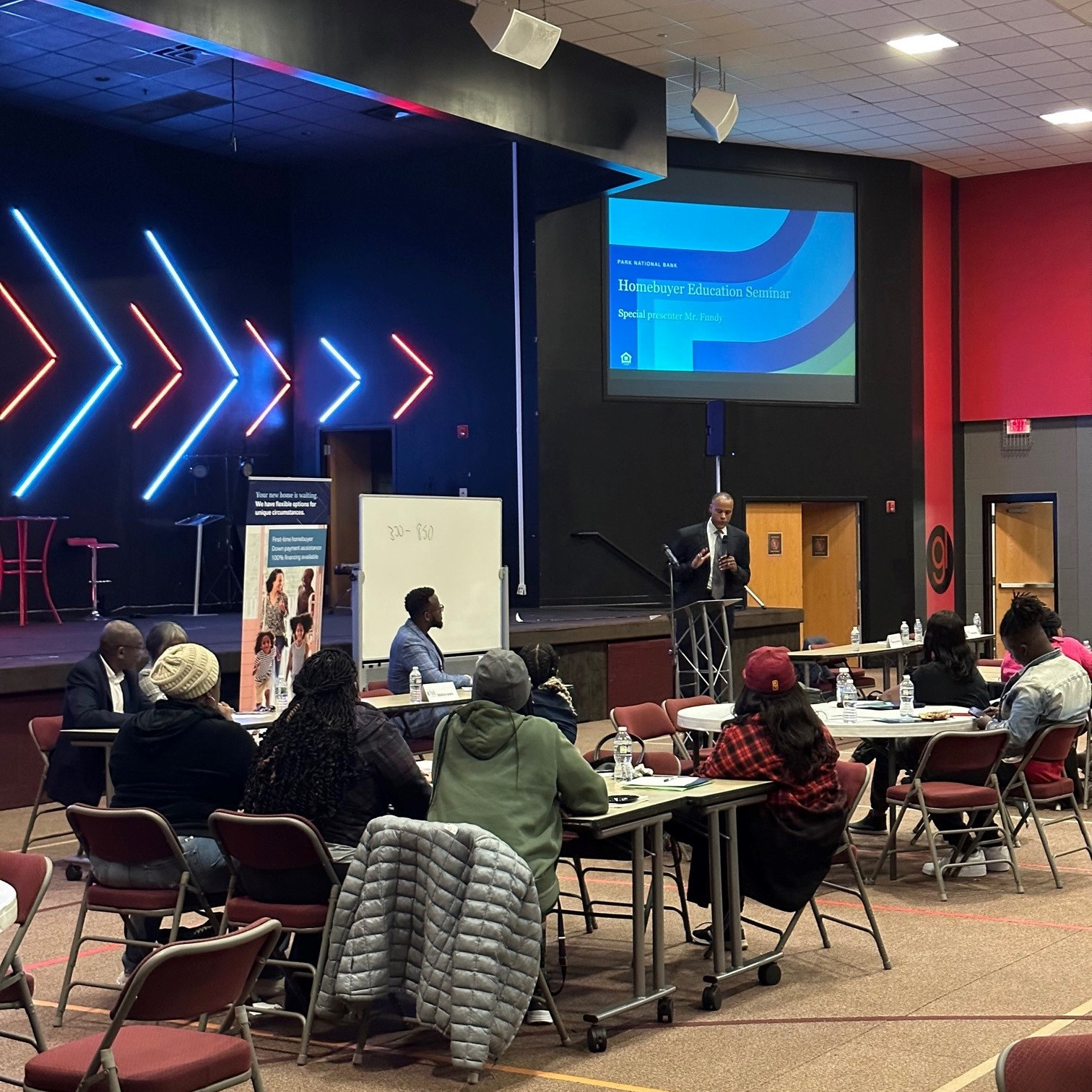
First Church of God
In partnership with The GoodLife Foundation and Park National Bank, we hosted a homeownership and economic empowerment workshop for underserved communities on November 9th.
Holiday Generosity
The holidays offer us a time to (re)connect with family and close friends. They also provide us with the privilege of helping those most in need. We want to recognize the Fahlgren family for blessing Cinnamon, a single mother of five, with groceries and Christmas presents. Tears swelled in Cinnamon’s eyes as she watched her youngest child, an adorable three-year-old, grin from ear to ear with excitement. One trip after another, the gifts kept pouring in as the Fahlgrens retrieved more and more goodies from their jam-packed vehicle. John Fahlgren is an LFYO partner and the owner of Sow Plated. Located in Upper Arlington, this is our favorite restaurant in Central Ohio. Great Food = Good Mood!

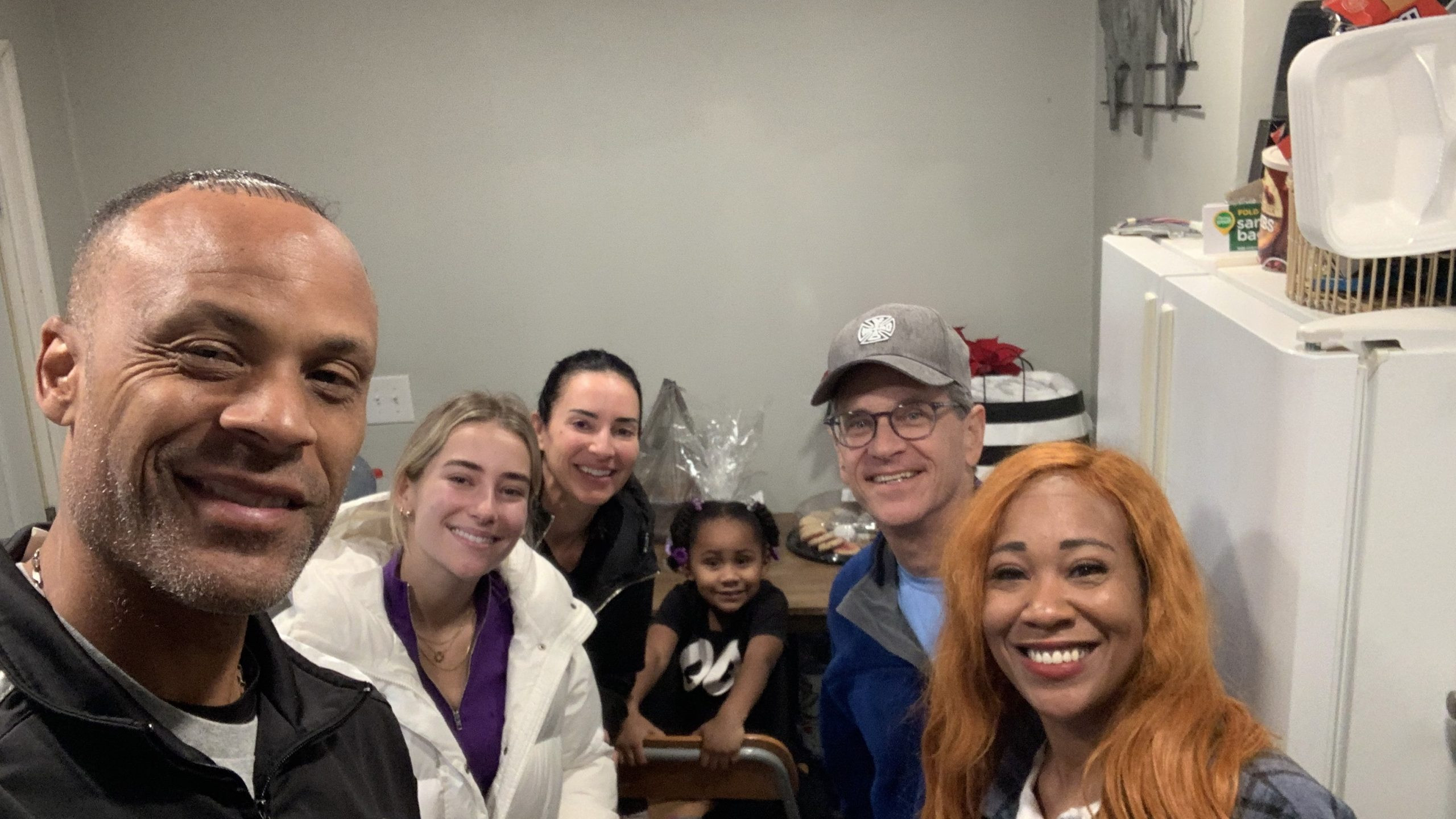
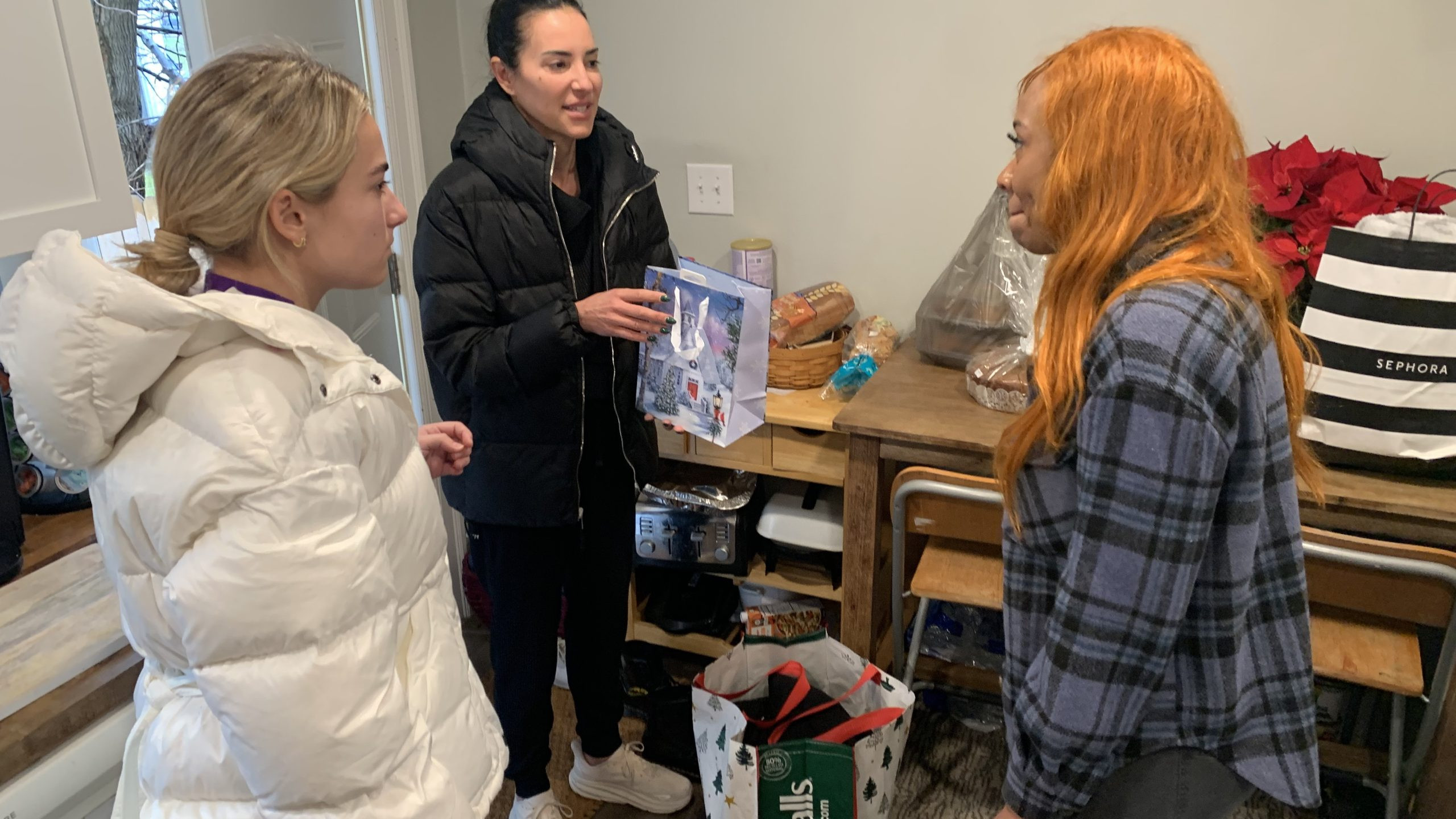

NBA Basketball Experience
Lastly, let’s talk basketball. Tom Warner was the auction winner of The Cleveland Sports Package at our fundraising event, which included a four-course dinner at five-star Morton’s Steakhouse and lower-bowl tickets to watch the Cavs play the New Orleans Pelicans on December 21st. Cavs legend, Campy Russell, donated the tickets; our seats were five rows behind the Pelicans bench. (Included in the photos are Tom, his son Grant, me, and my son Eli.)
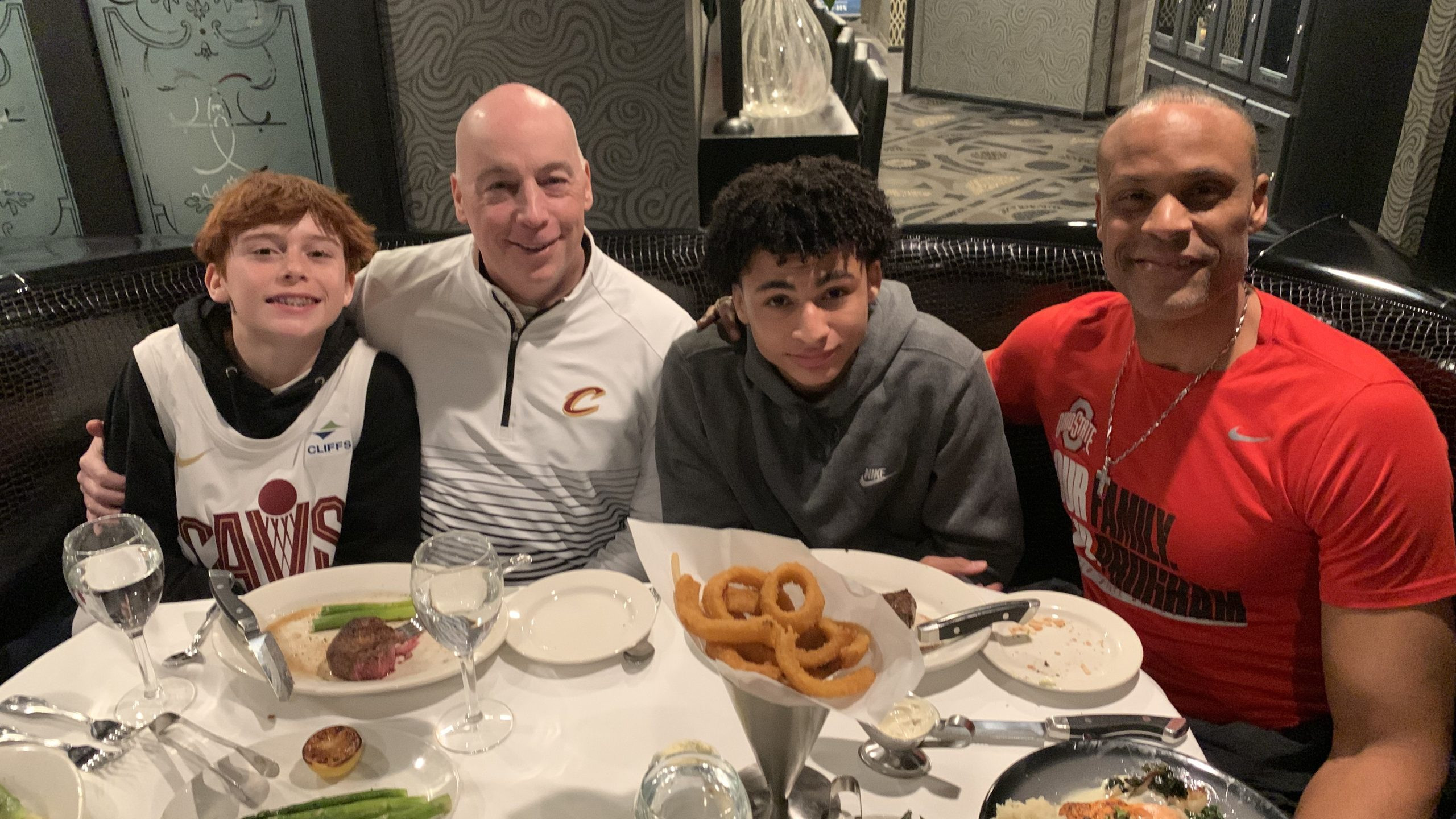
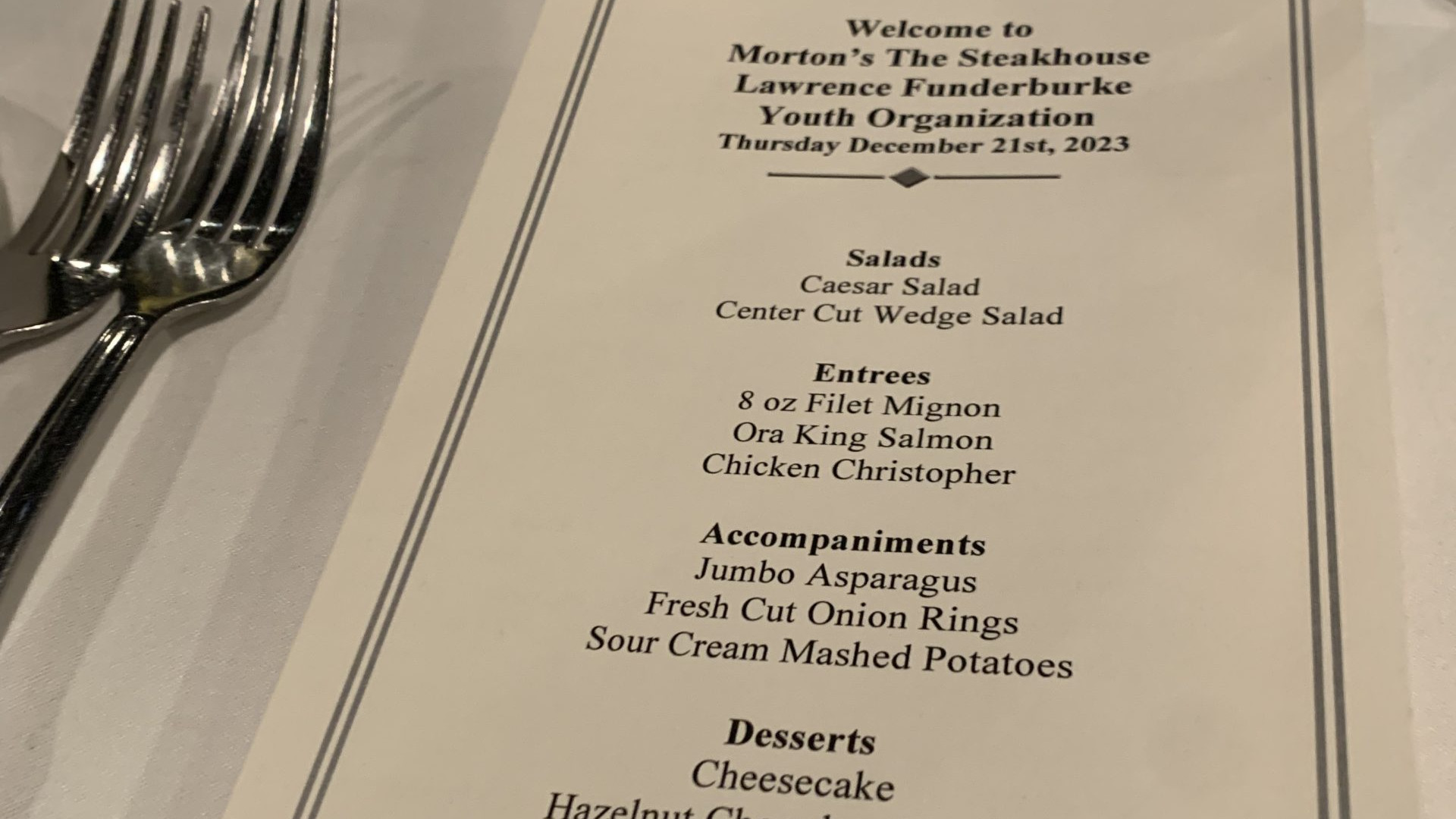
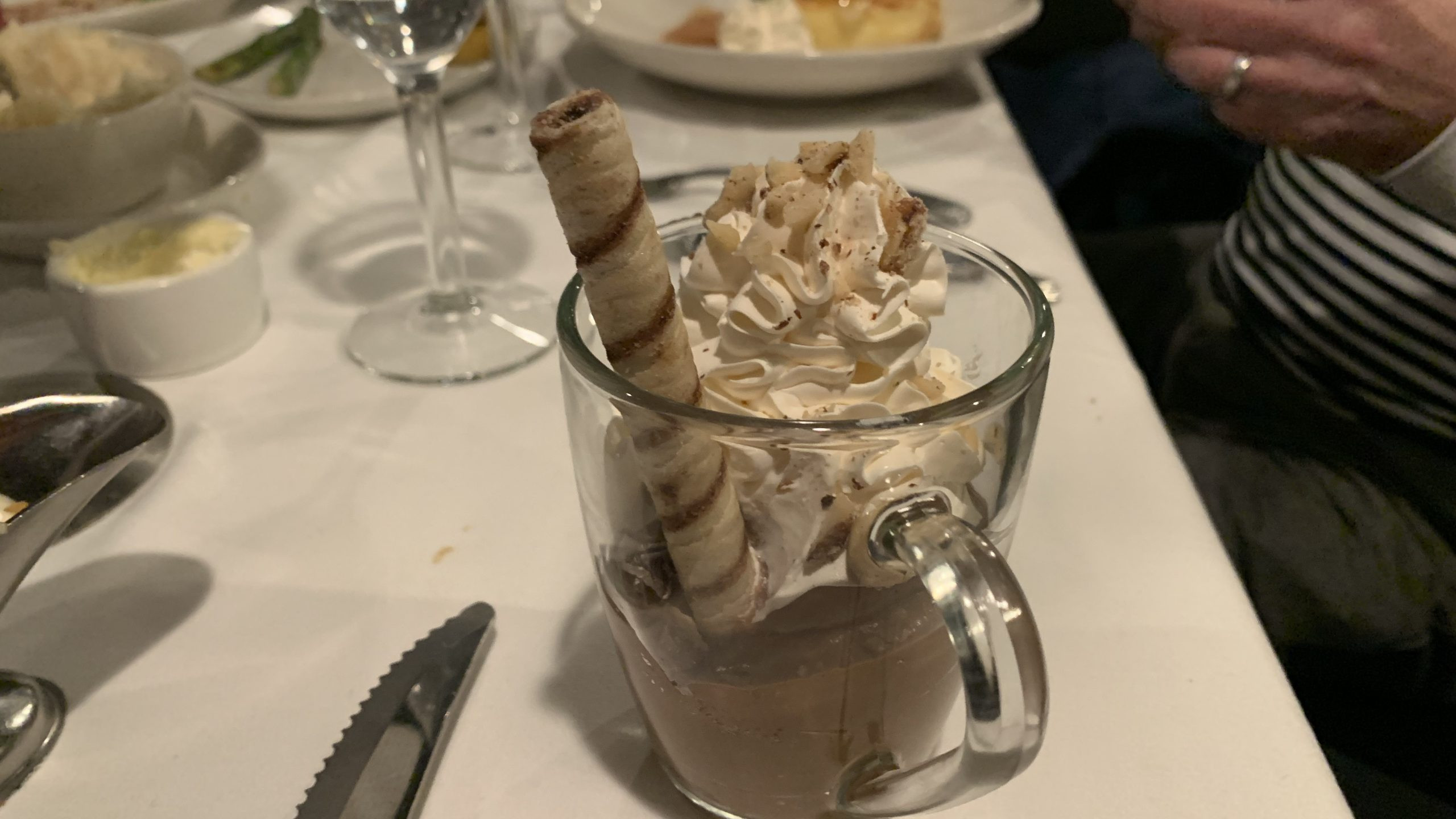
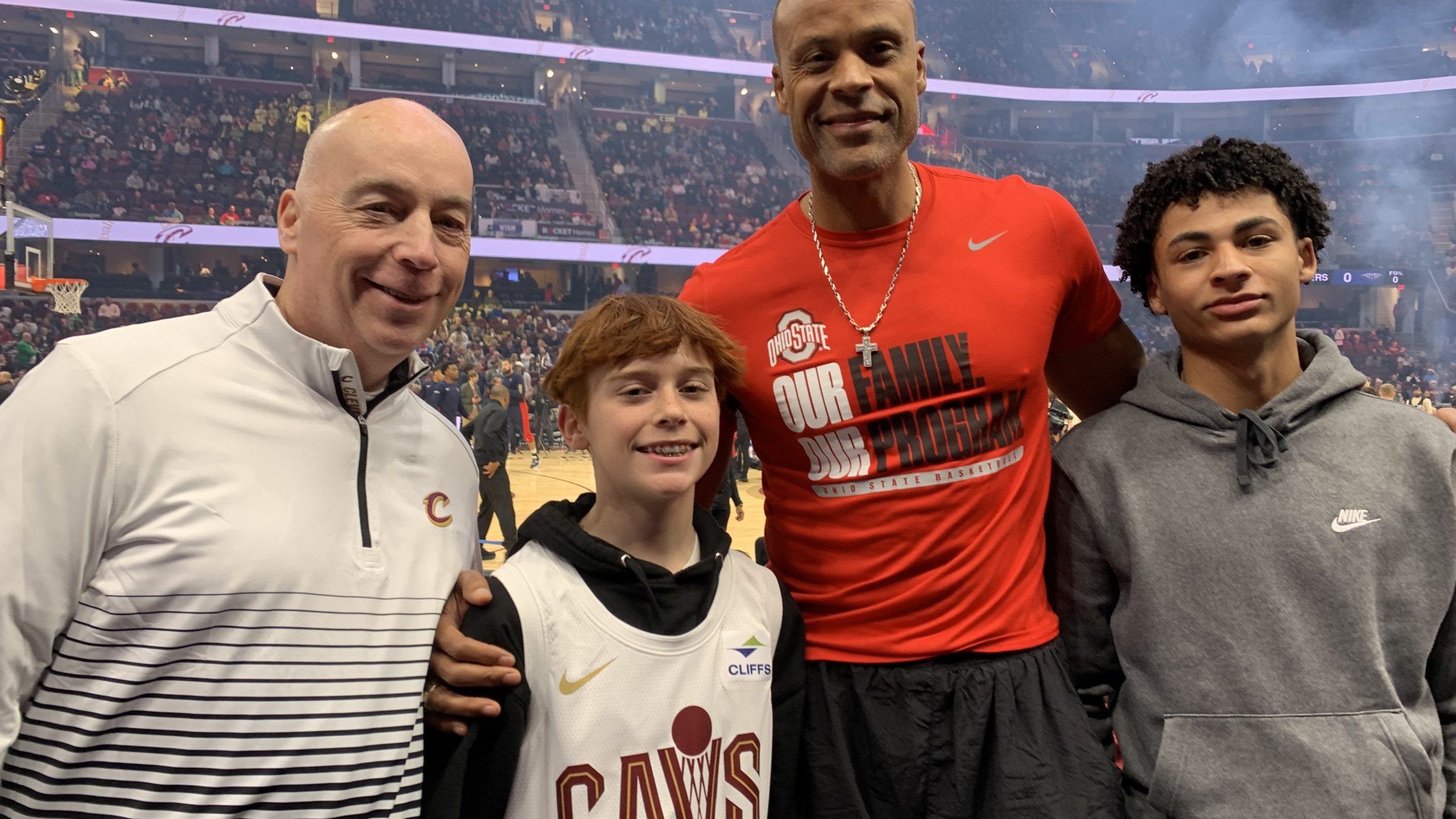
High School Basketball and Mentoring Program
The year ended with the launching of LFYO’s new initiative, The Mr. Fundy’s Mentoring Playbook for Youth and Young Adults. Mentoring concepts are crystallized through basketball terminology. Monya and I presented three workshops for the coaching staff and varsity boys basketball teams at Hartley, Walnut Ridge, and Africentric, respectively. Players were fed a deliciously healthy meal, shown how to identify and articulate their personal brand, and given the template for lifelong success as outlined in our mentoring playbook poster. I’ll share more insights on mentoring in a five-part series throughout this month. January is National Mentoring Month. Time for you-me-us to step up our influence game personally, professionally, and philanthropically.

Bishop Hartley Varsity Boys Basketball
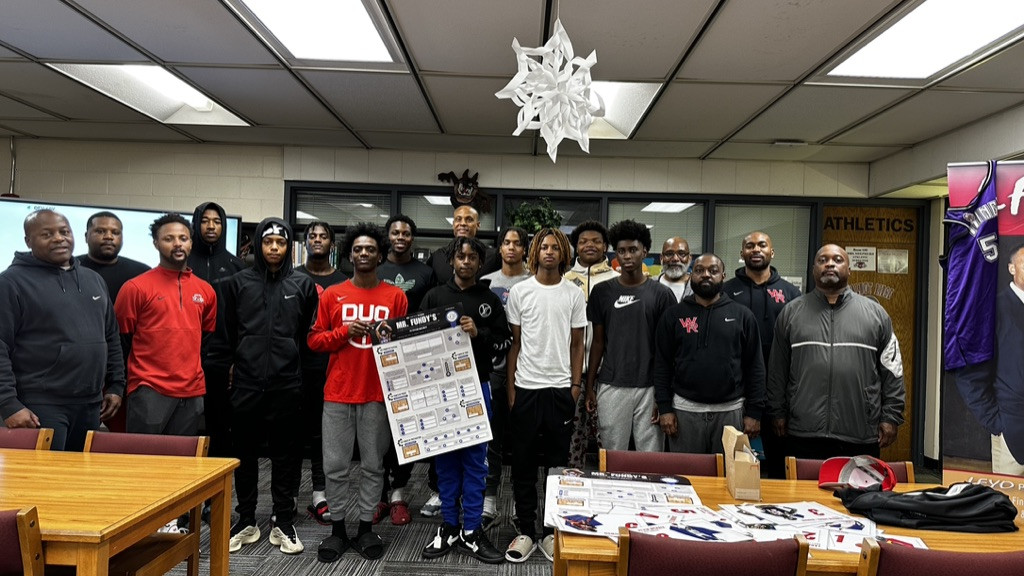
Walnut Ridge Varsity Boys Basketball
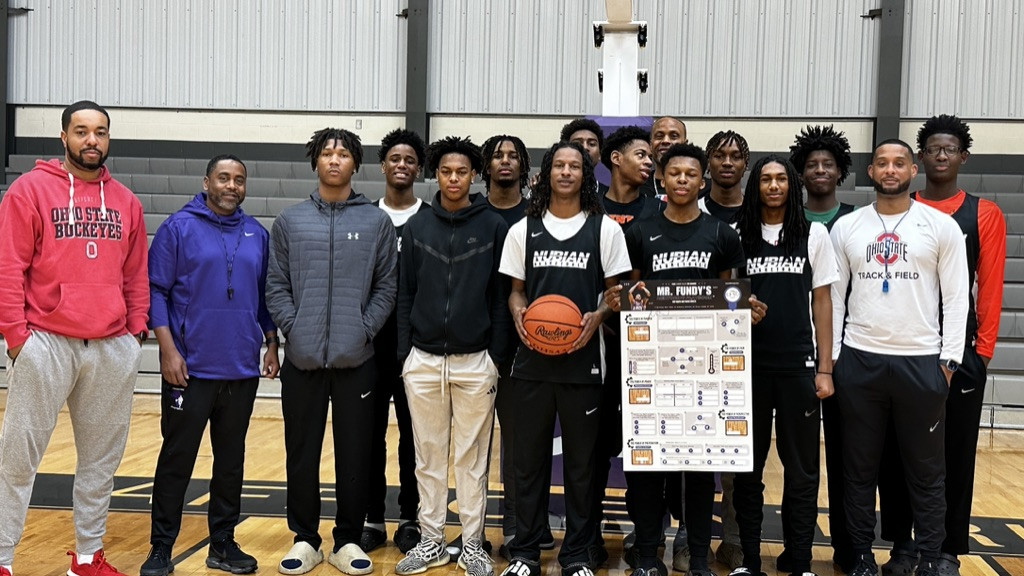
Africentric Varsity Boys Basketball
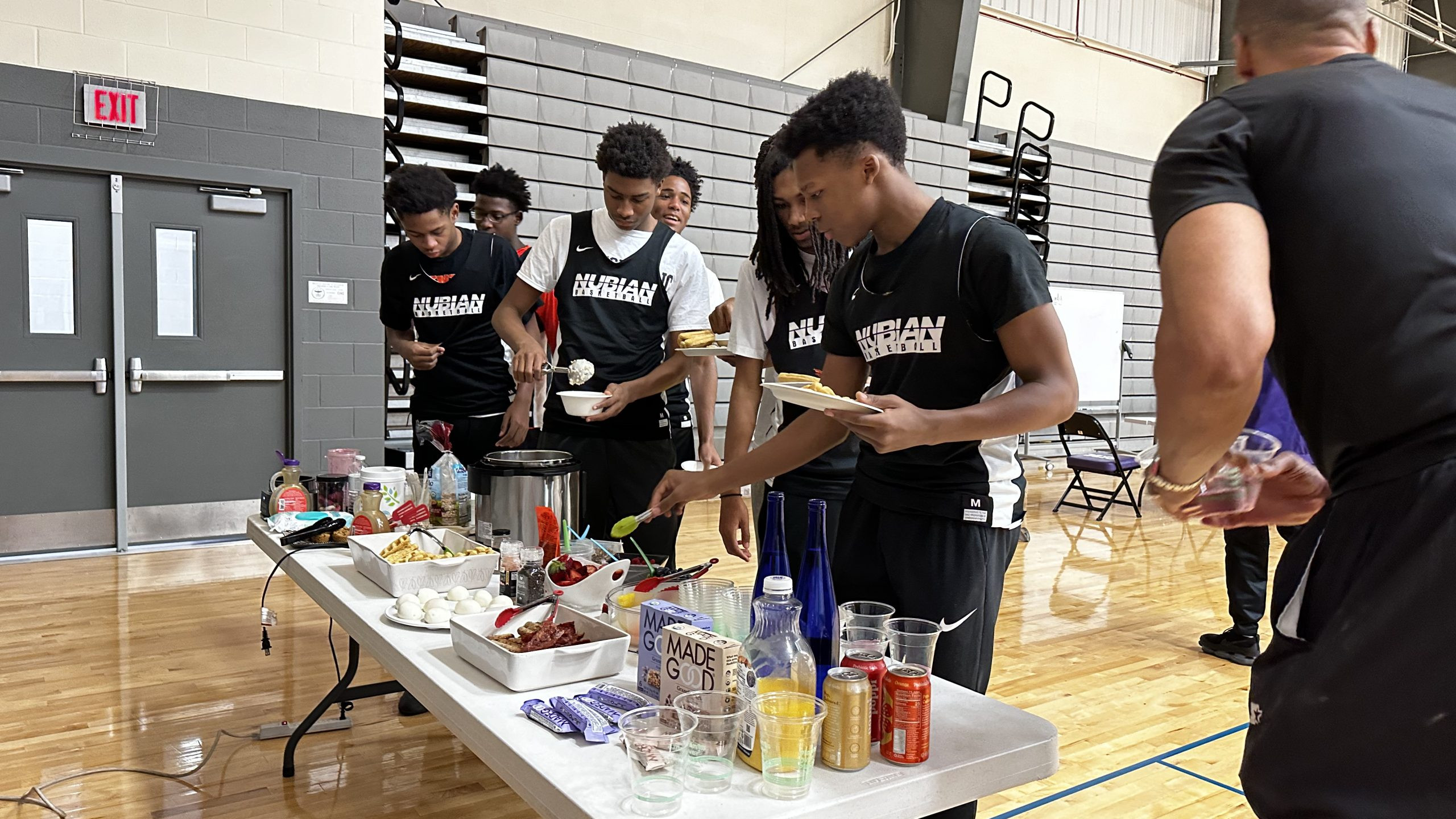
Deliciously Healthy Brunch
With your support, we can continue to make a real difference in the lives and legacies of vulnerable communities
The Power of Mentoring – Giving Tuesday
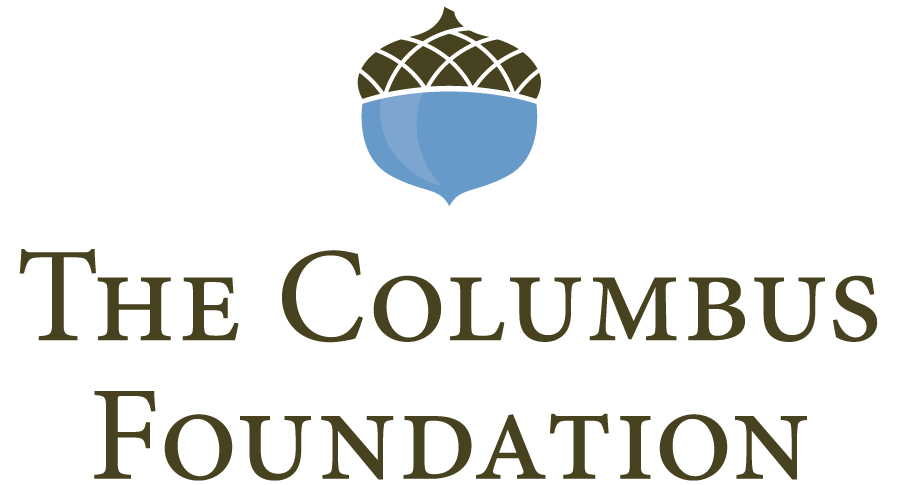
Giving Tuesday
November 28, 2023
The Power of Mentoring
How an Attitude of Gratitude Can Transform Our Central Ohio Community
Giving Tuesday is one week away, a global movement with local momentum to change lives and transform legacies. Here’s where your help comes into play with a much-needed assist. On Tuesday, November 28, The Columbus Foundation will cover all fees for gifts made by credit card through The Giving Store to support the Lawrence Funderburke Youth Organization. So, 100% of EVERY tax-deductible donation made on this date through The Columbus Foundation will go directly to LFYO!
Outside of a parent or family member, who has had the biggest influence in your life personally, professionally, or philanthropically? It’s probably safe to say that this person or group has served as a trusted mentor, a relatable and reliable tour guide with a proven track record in producing verifiable results in your life. Without this guidance-counselor relationship and success GPS system, where would you be? Now, imagine what life is like for at-risk youth who have been shortchanged from birth to adolescence in the area of effective mentoring. I’m not making excuses, but these young people are likely going to take their pain out on others, or themselves, or take matters into their own hands (a la Kia Boys) to navigate their brutal existence. And a young mind is ill-equipped to carry this burden alone.
We fell short of our $250,000 goal in raising funds at our 2023 LFYO Fundraising Luncheon by $100,000. We’re still hopeful that we can achieve our capital objectives by year’s end. Why? Because you’re assist, really investment, will help us serve over 5,000 participants through the Mr. Fundy’s Mentoring Playbook for At-Risk Youth and Vulnerable Young Adults. In fact, some of the mentees will serve as peer-to-peer mentors and receive compensation for their efforts. Money can act as an incentive, but development activates the real reward.
In closing, peer-to-peer mentoring, or what I term, horizontal influencing, is about the village elevating the village. This can occur by pushing, pulling, or propelling each other across the success finish line. Adults can serve as facilitators of youth-led change, but the workload rests with the initiators of transformation — peers who look, think, and act like them. Yes, we can provide the appropriate guidance and applicable guardrails, but grown folk need to step aside and let our young people get in success shape through peer-to-peer coaching, conditioning, and cheerleading measures. And the life and legacy game, theirs and ours, is truly on the line. (The Mr. Fundy’s Mentoring Playbook for At-Risk Youth and Vulnerable Young Adults has been praised by Zack Klein, Columbus City Attorney.)
Thank you for your time, talents, and treasures as LFYO difference-makers and philanthropy mentors!
Click the button below to help us reach our year-end fundraising goal through The Columbus Foundation Giving Store.
Chillicothe Wellness Workshop
Chillicothe Wellness Workshop
In Appalachia Ohio, 10 percent of the population are people of color, and yet, this demographic only receives 3 to 4 percent of the outreach dollars to impact this vulnerable area of the state. In partnership with the African American Community Fund, which exclusively serves Appalachia Ohio, LFYO presented a four-hour wealth and health workshop for black and brown Chillicothians on August 12th. Given the fact that my wife Monya grew up there as a child, this place is near and dear to my heart. Like so many southern Ohio towns, Chillicothe has seen its middle-class lifestyle become more and more constrained by factors outside and inside their control. They’ve also watched their most marketable quality — a rock-solid work ethic — result in less and less residual benefits. Blue-collar jobs lost in the 1980s due to global outsourcing forces to produce cheaper products at lower wages was the unfortunate catalyst. The resulting fatherless crisis (driven by purposeless adult males), drug dependency epidemic, and overall hopelessness have crippled the region. It’s a tale of two vastly different worlds. A shrinking minority have capitalized on an oasis of opportunities as risk-seeking entrepreneurs, real estate investors, and revered philanthropists. The expanding majority view life as one painful voyage with little hope for a promising future but full of legacy-altering, coulda-woulda-shoulda regrets. To most Appalachia Ohio residents, their opportunity glass is always half empty.
Our empowerment goals were clear-cut throughout the wellness workshop. Teach participants the language, lingo, and labeling of wealth and health through sensory-based approaches. All three — language, lingo, and labeling — embrace personal discomfort. Of course, no growth can occur without an upgraded mindset. An individual’s expectation of the future changes when exposure and experience are both transformed in the present. And it’s hard to get someone excited about a future that hasn’t been seen before. Thus, we familiarized participants with the investment world, a key pillar of a well-constructed financial plan. Investing is arguably the biggest stumbling block for any racial demographic, especially those who suffer from “math anxiety.” Investing in math is complex, but it doesn’t have to be complicated. Of course, it can serve as a compound interest friend or foe. (The bulk of the workshop was spent on investing. Typically, blue-collar communities instinctively understand the basics of personal or family finance — live below your means, avoid unnecessary debt, and maintain a respectable credit score. But most middle-class households in rural Ohio know very little about the stock market, even when working for recognizable, publicly traded companies.)
First up was The Portfolio Management Game, one of our signature learning modalities to bridge the growing and glowing opportunity divide in America. This PDF app crystallizes the world of investing in a language that’s relatable, palatable, and sustainable to every social class group. Each player is given $1,000,000 to invest in various investment options, including cash/cash equivalents, stocks, bonds, mutual funds, index and exchanged traded funds, private equity, and hedge funds. At the onset, though, an analysis of one’s risk tolerance and financial goals serve as key drivers of portfolio construction decisions. Participants must wait with bated breath as they watch how global economic factors and conditions impact — positively or negatively — their million-dollar portfolios on a macro level through four scenarios. Of course, taxes, inflation, diversification, and asset allocation are additional considerations of this real-world, simulated game.
The Portfolio Management Game was the perfect segue into the Mr. Fundy’s Stock Pro Game, a hypothetical investment game with both macro and micro components. Participants assessed the dynamics of large-cap, mid-cap, and small-cap stocks from a value-investing perspective. Each participant was given $1,000,000 to invest in five companies, which consisted of 10 large cap, 5 mid cap, and 5 trim cap options. From banks to airliners to software developers to clothing and apparel manufacturers as well as other industry categories, participants admitted that selections were made based on their “familiarity profile” — what they knew, who they trusted, and how they shopped in terms of products and services. Key metrics in the Mr. Fundy’s Stock Pro Game included earnings per share (or EPS), price-to-earnings ratio (or P/E ratio), dividend yield, return on assets (or ROA), and return on equity (or ROE). They were shown how to calculate market share (stock price x # of shares outstanding). Also, participants were taught how to find the missing variable in an algebraic equation when two out of three variables are known. For example, if earnings per share and number of shares are stated, then total earnings or net income can be found through deductive reasoning.
As a race, we’re behind the ball financially. And not much has changed for our wealth picture since The Emancipation Proclamation of 1865, which supposedly set us free. Blacks spend more money on food, clothing, and entertainment than any other ethnic group. What we touch as loyal consumers, we usually buy based on how it’ll make us feel. Who we wear regarding designer labels, in our minds, plays a large role in how we’re viewed, accepted, or denigrated in the eyes of others. Where we find laughter and enjoyment, is how we escape from our real or imaginary pain. As U.S. congresswoman Joyce Beatty once shared with me several years ago, “We, black folks, need to be on both sides of the cash register.” It’s time for us to break free from what holds us back as a people — feeling a certain way before we do a certain thing. Feelings can serve as a barometer, but they inevitably make a terrible guide. In the last hour of the workshop before Chef Jim Warner’s cooking demo, rule-of-thumb averages were highlighted in the five areas of comprehensive financial planning using a case study as the backdrop: life planning, financial management, investment planning, income and asset protection, and estate planning. (In general, it takes a minimum of 20 hours of intensive training to construct a viable foundation in personal or family finance. And scaffolding attributes to accumulate, protect, and distribute legacy wealth involve countless hours more.)
Chef Jim Warner wrapped up the workshop with a stellar presentation on healthy eating. Over the years, he has prepared meals for Kirk Herbstreit, Joey Galloway, Michael Redd, “Beanie” Wells, and yours truly. He discussed the important role nutrition can play in the lives and legacies of those who prioritize wholesome eating. Yes, it’s a matter of life or death every time we sit down to eat. Real food helps us think better, feel better, and do better. Warner highlighted, “Start today by making small changes in what you eat and drink.” He added, “Pay the price now so that you can reap the rewards later.” Every delicious food item prepared by Chef Warner was gluten-free, GMO-free, dairy-free, additive-free, soy-free, and pork-free (but not taste-free). Organic foods may cost more, but the benefits far exceed conventional alternatives. Even on a limited budget, quantity and quality of life are greatly improved when consuming foods that are good for the brain, belly, and body. Pay now, play later. Or, play now and pay later. Doesn’t matter if it’s our wealth condition or health status.



